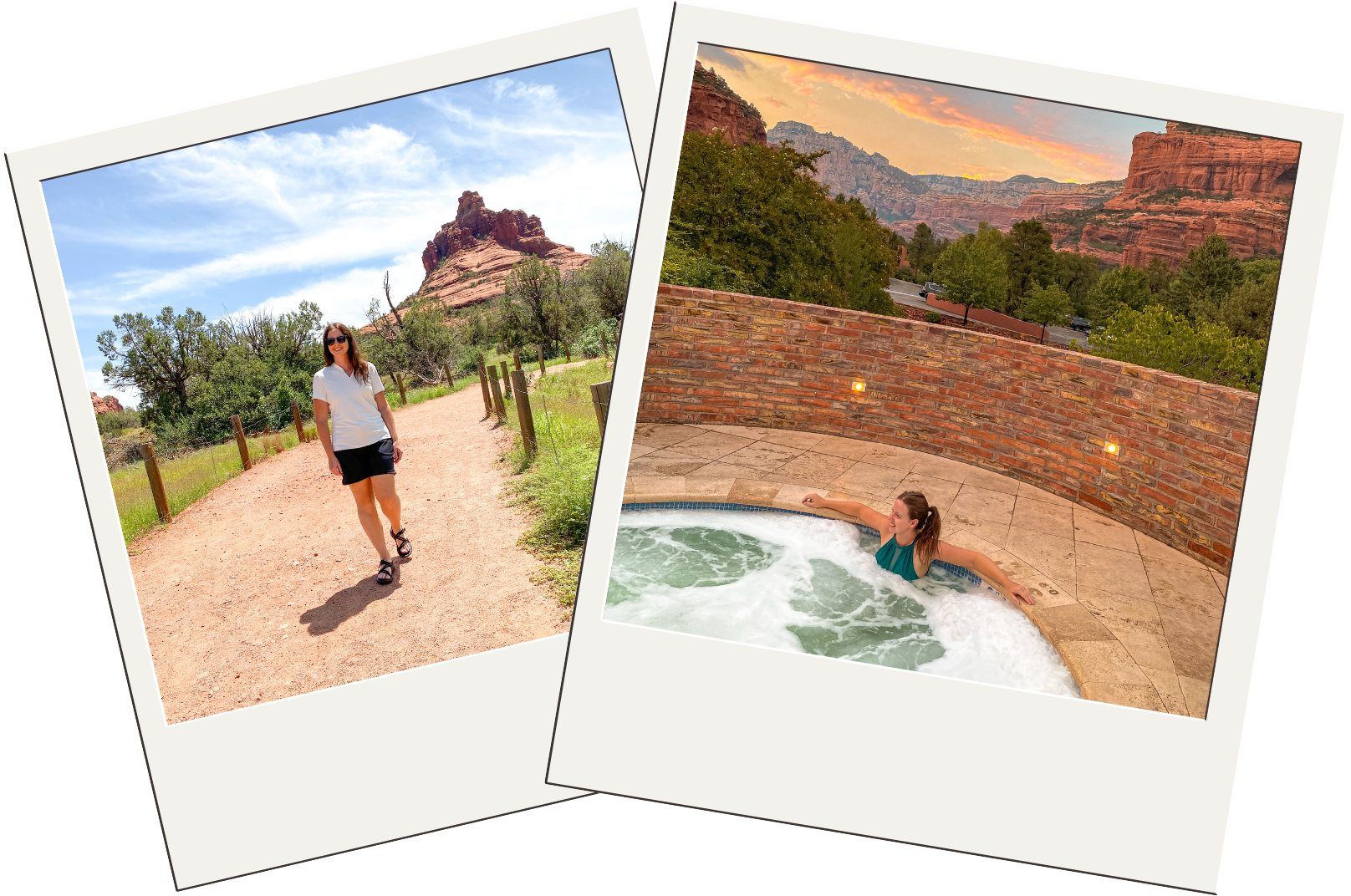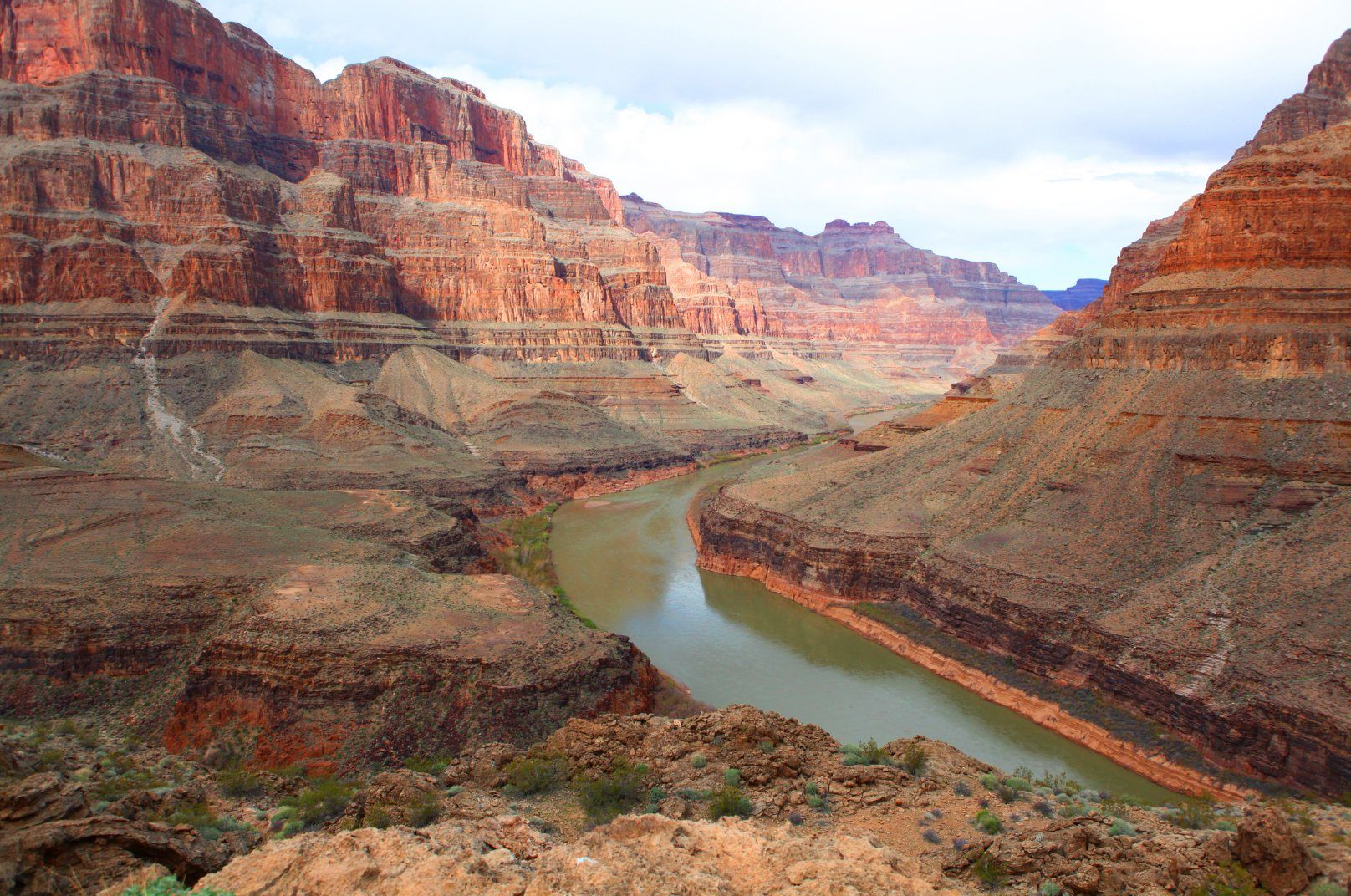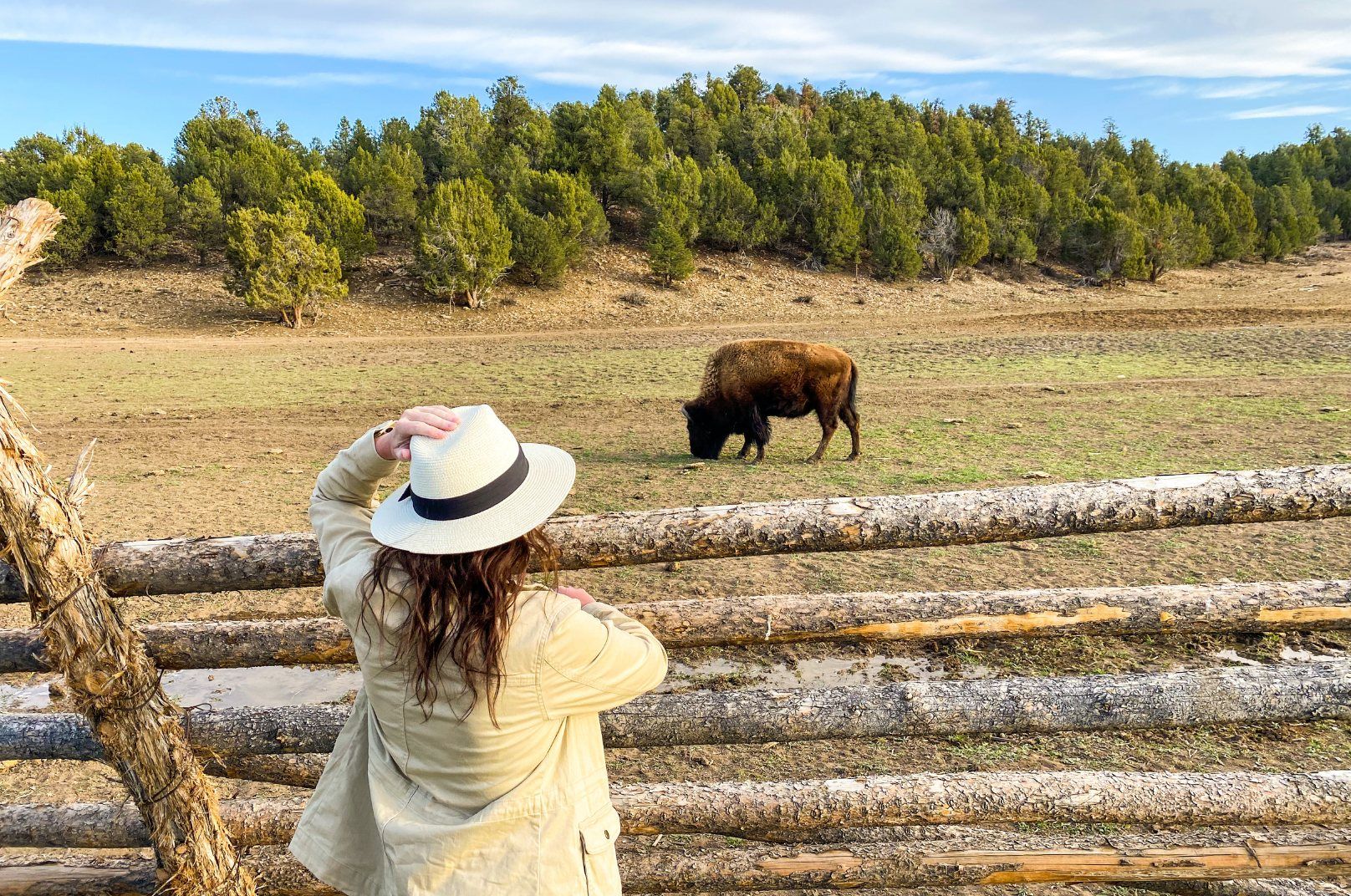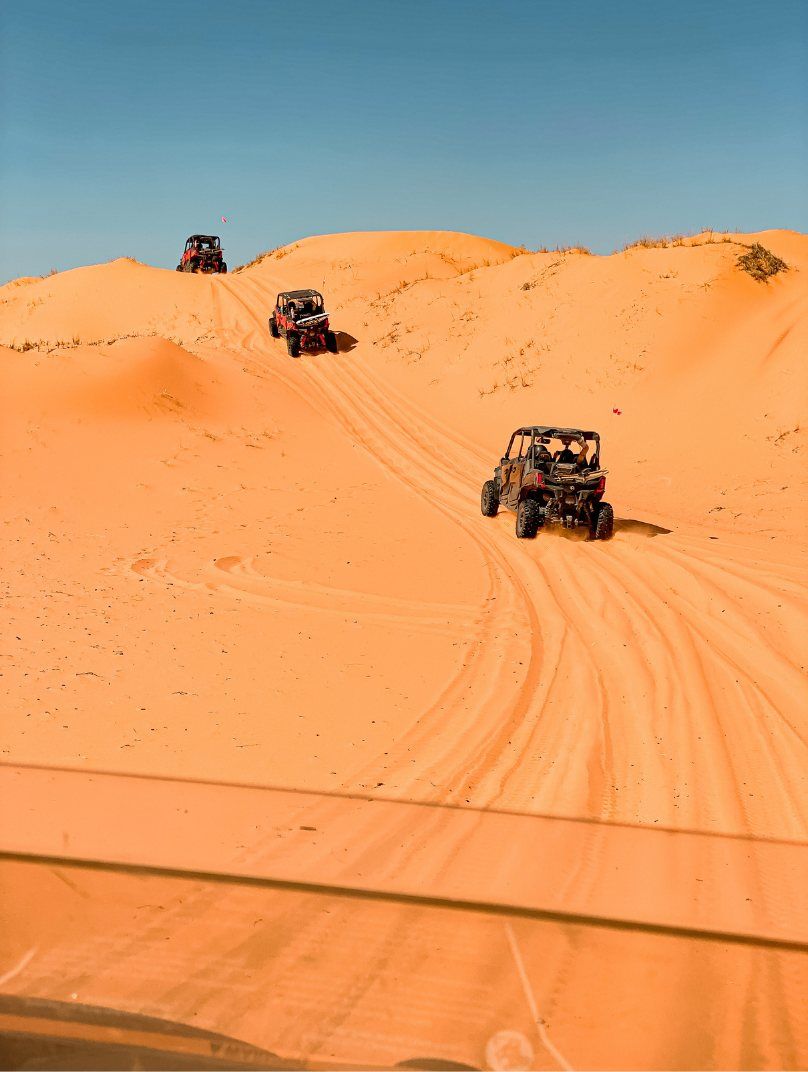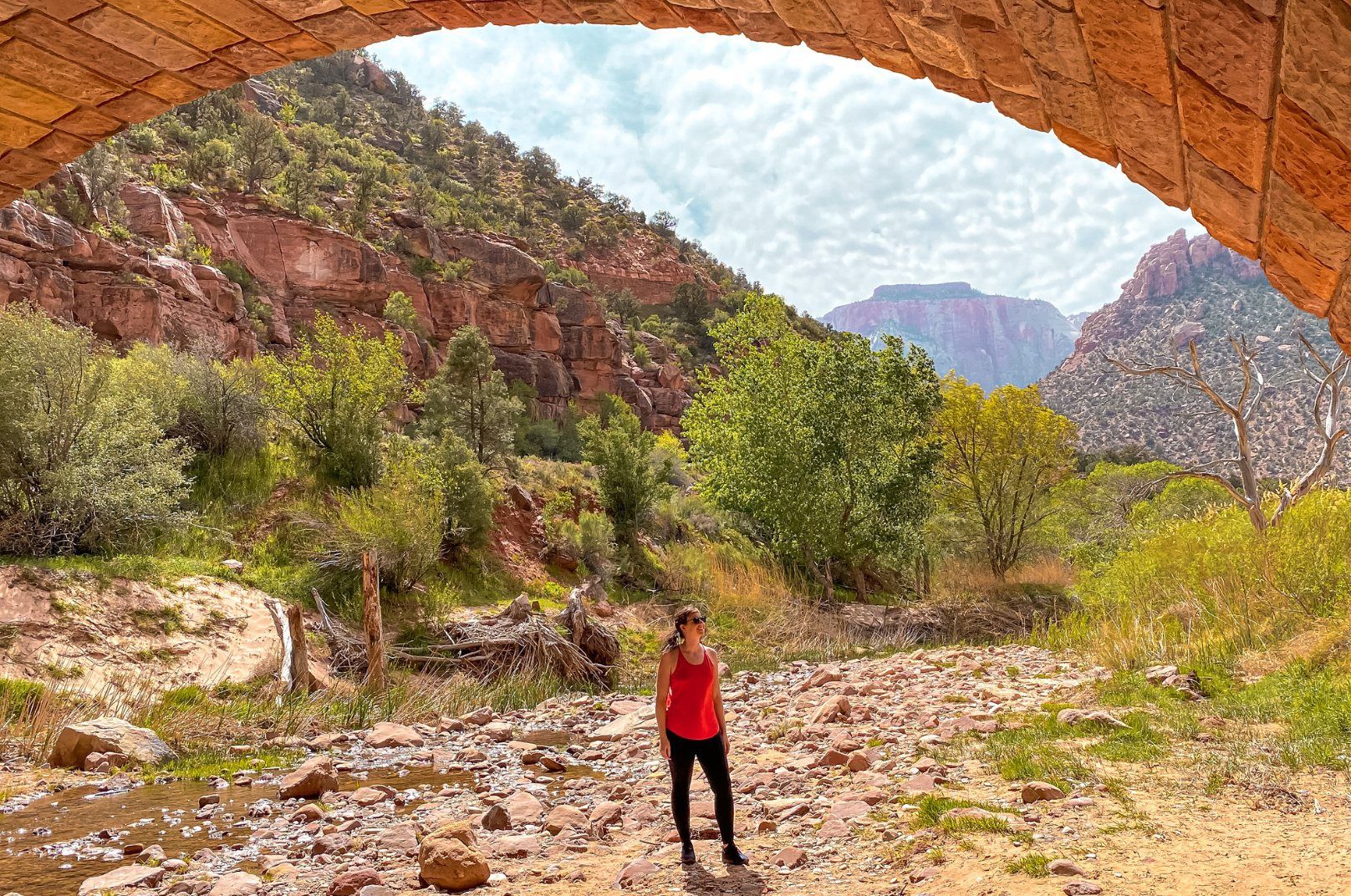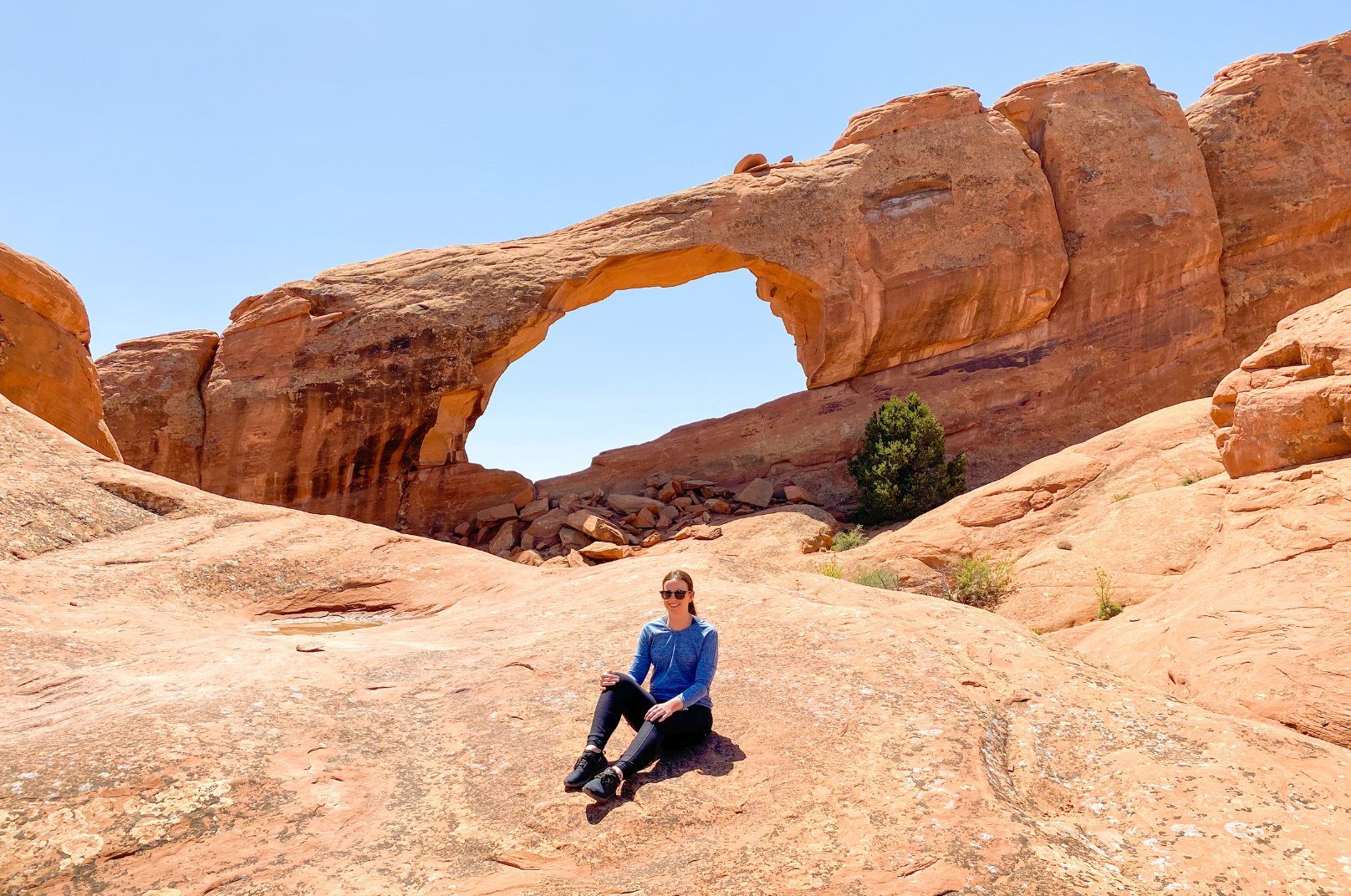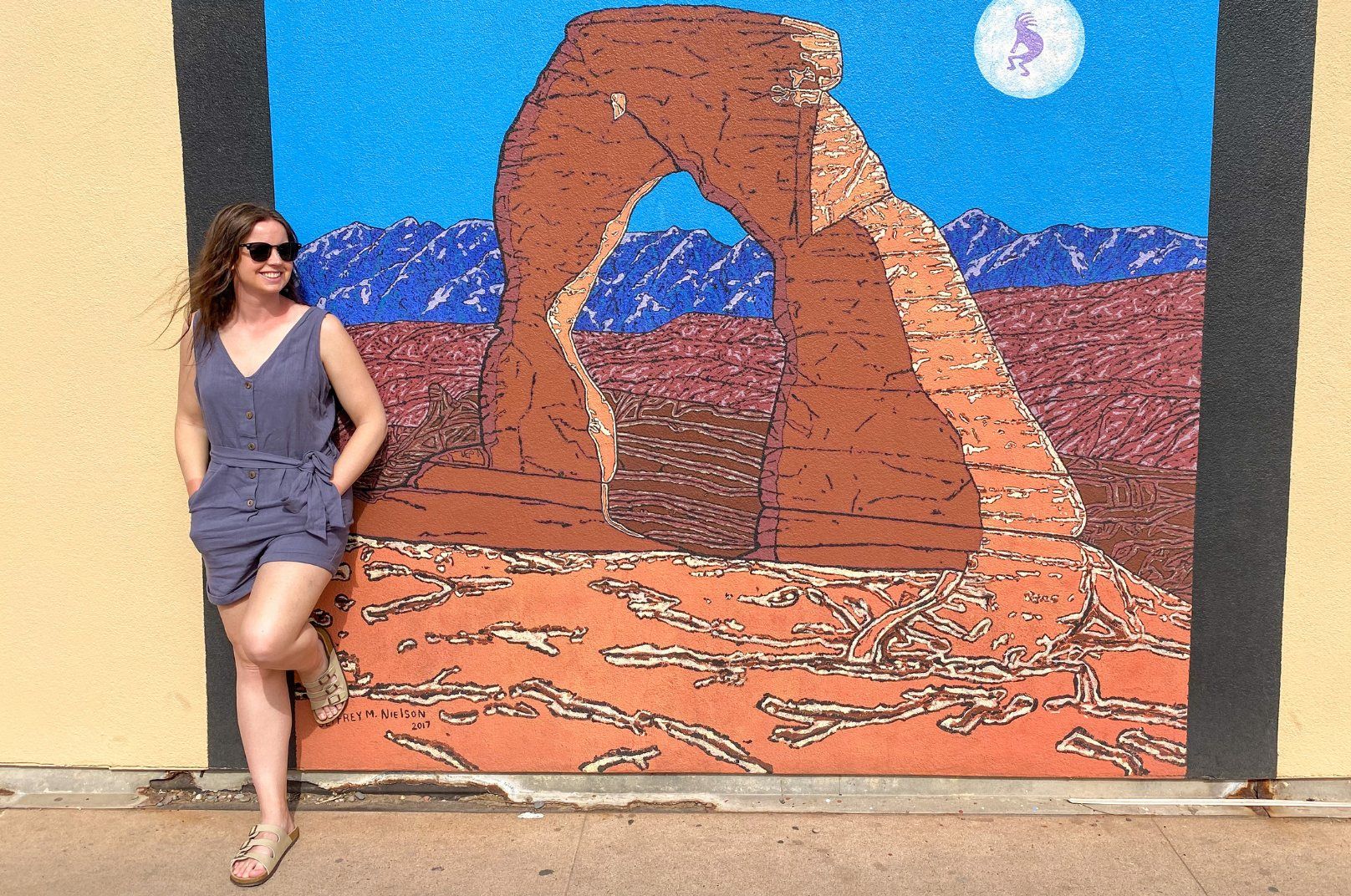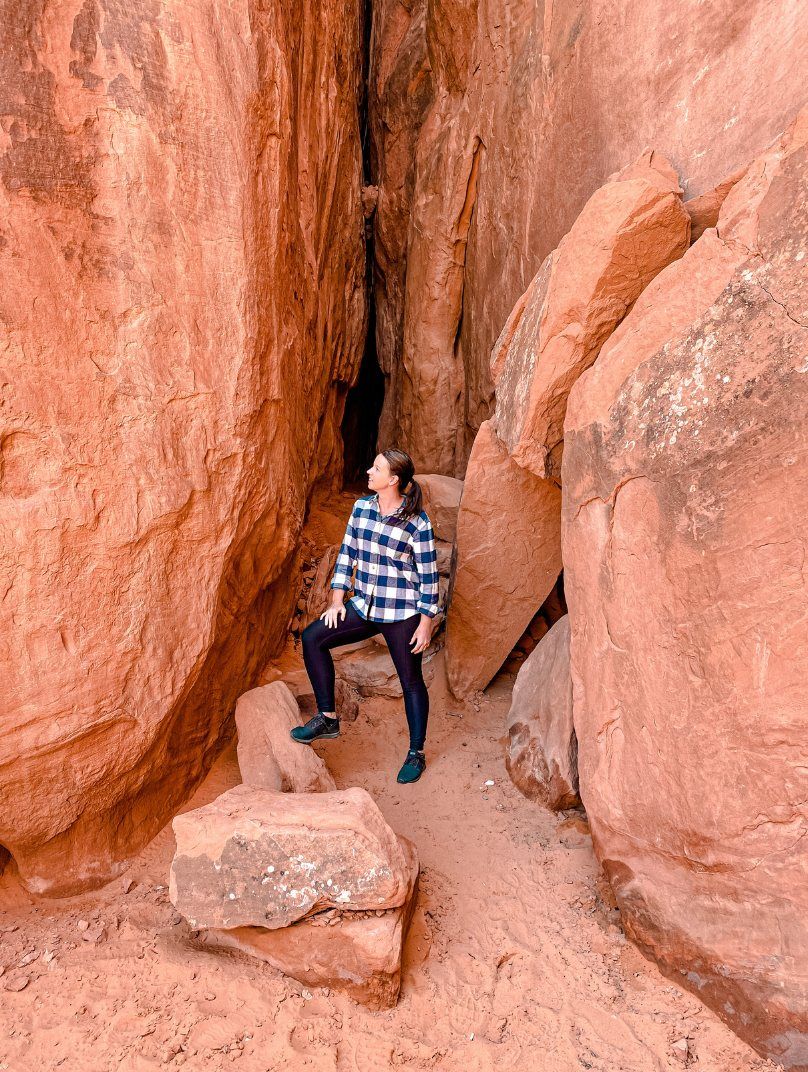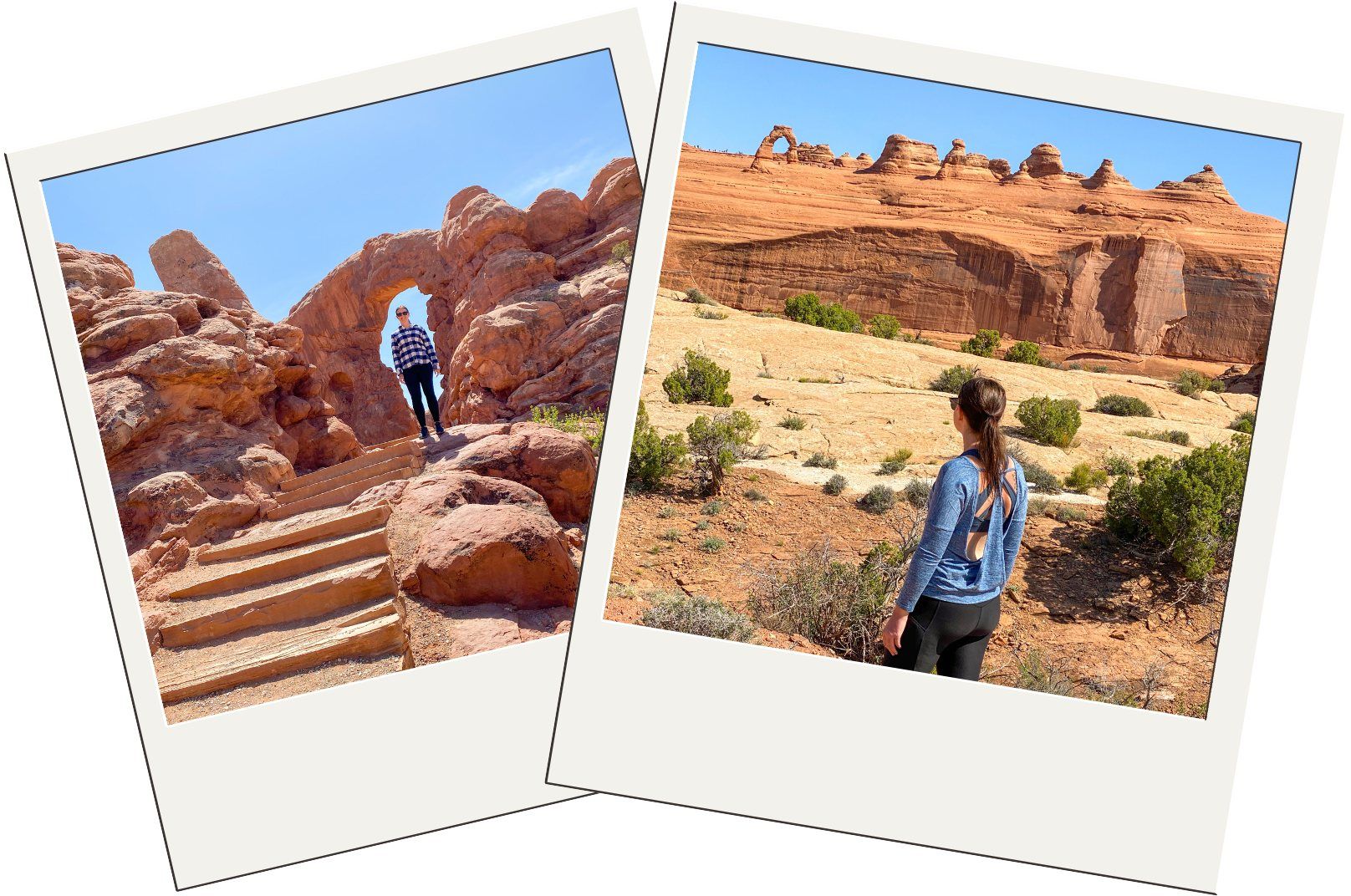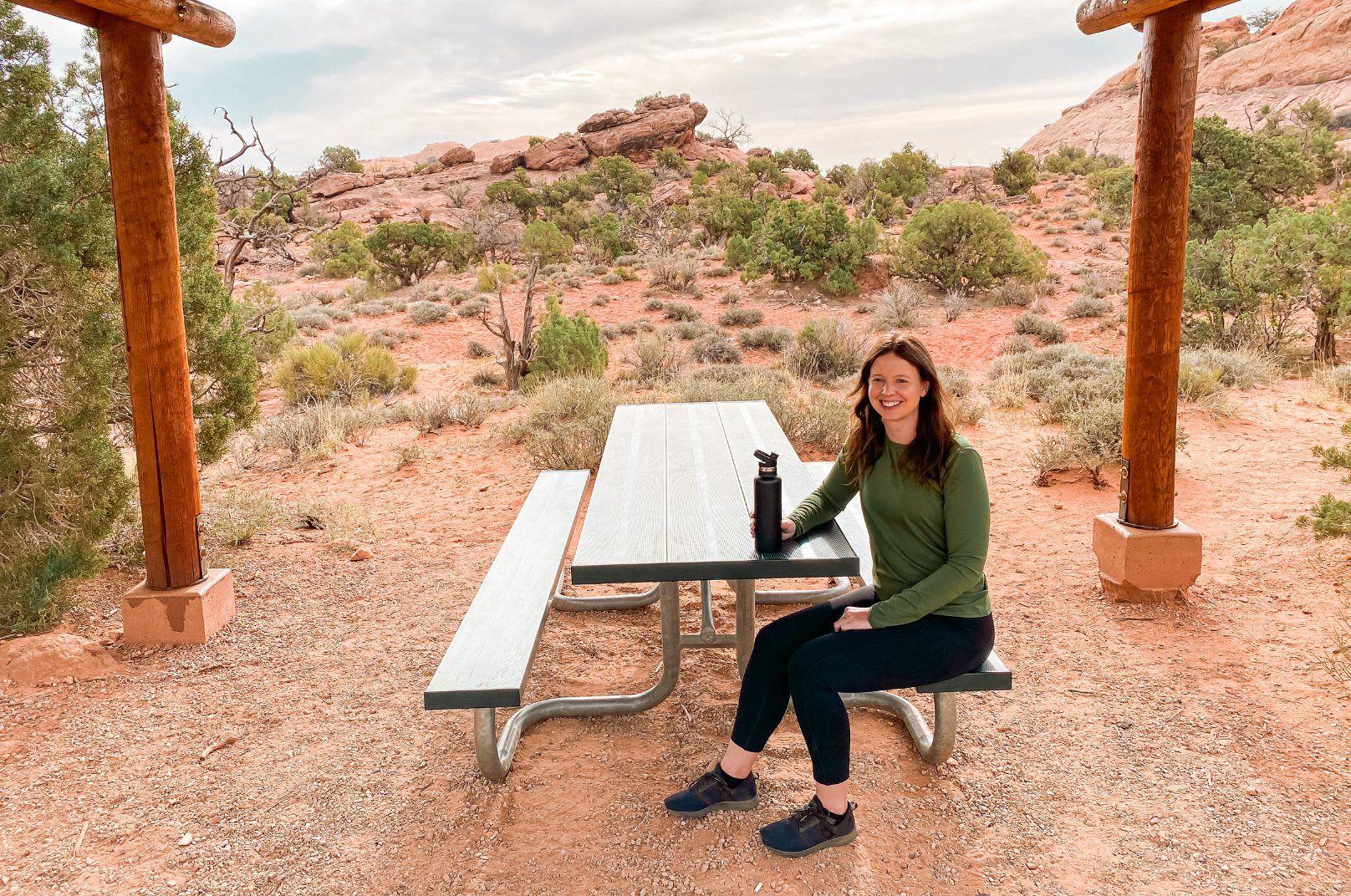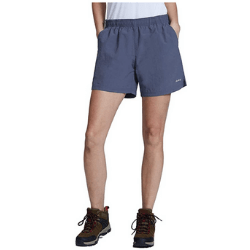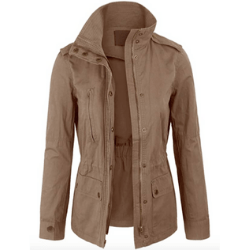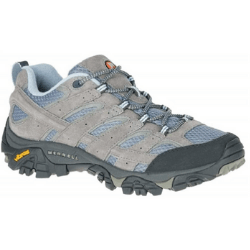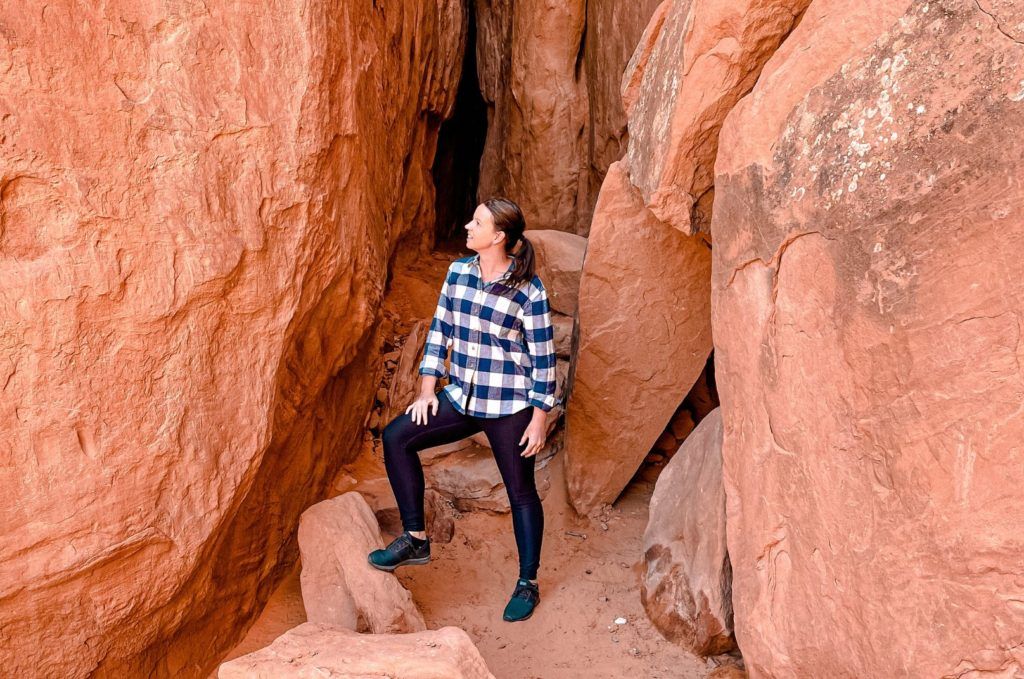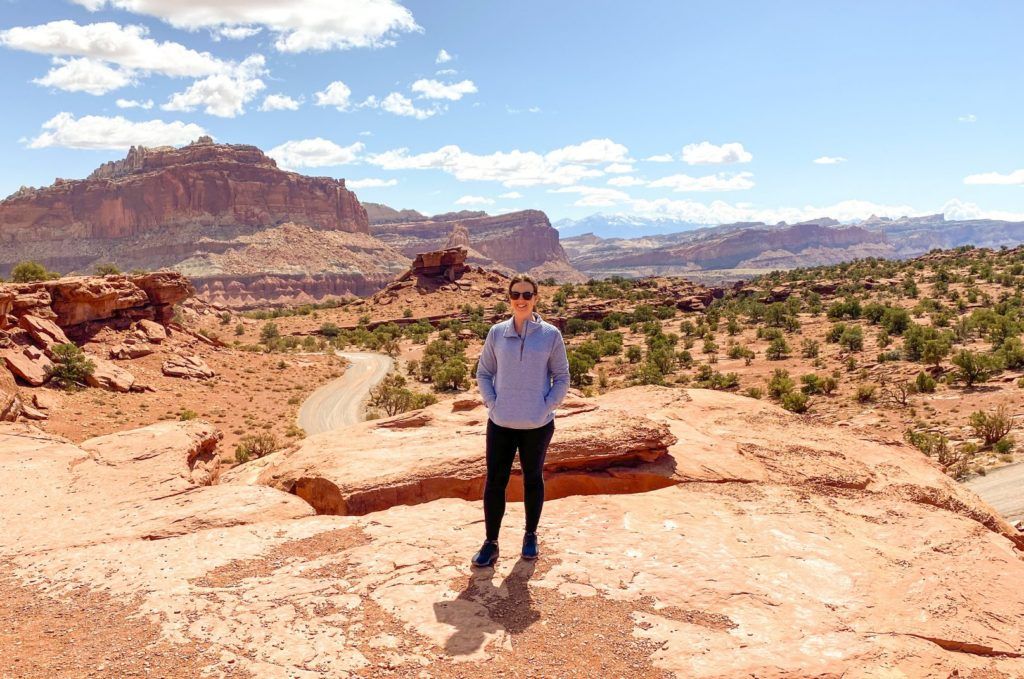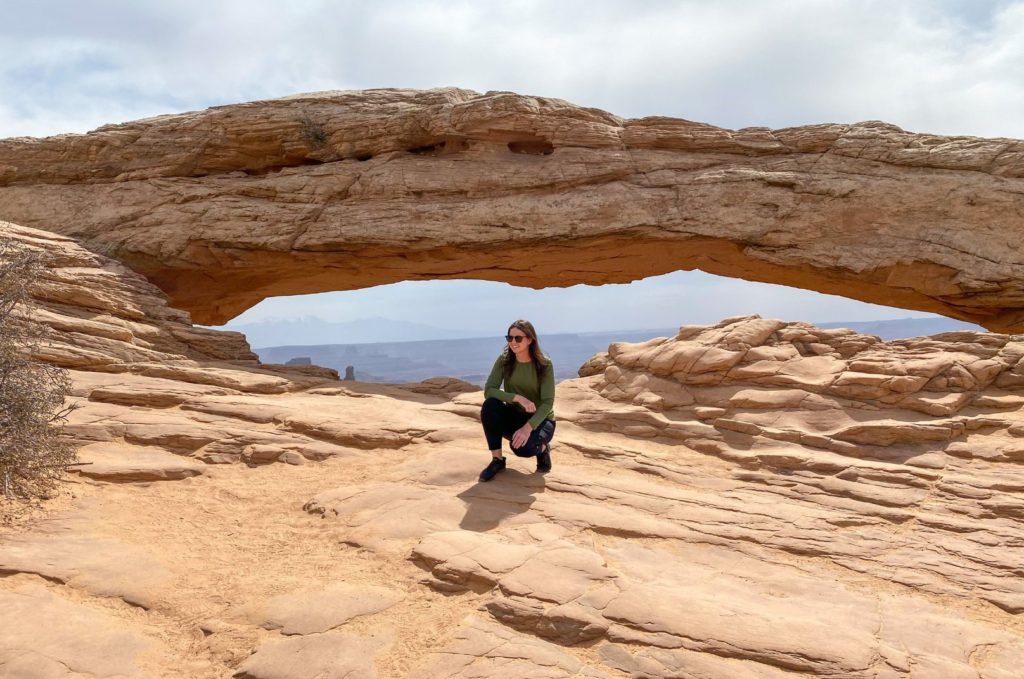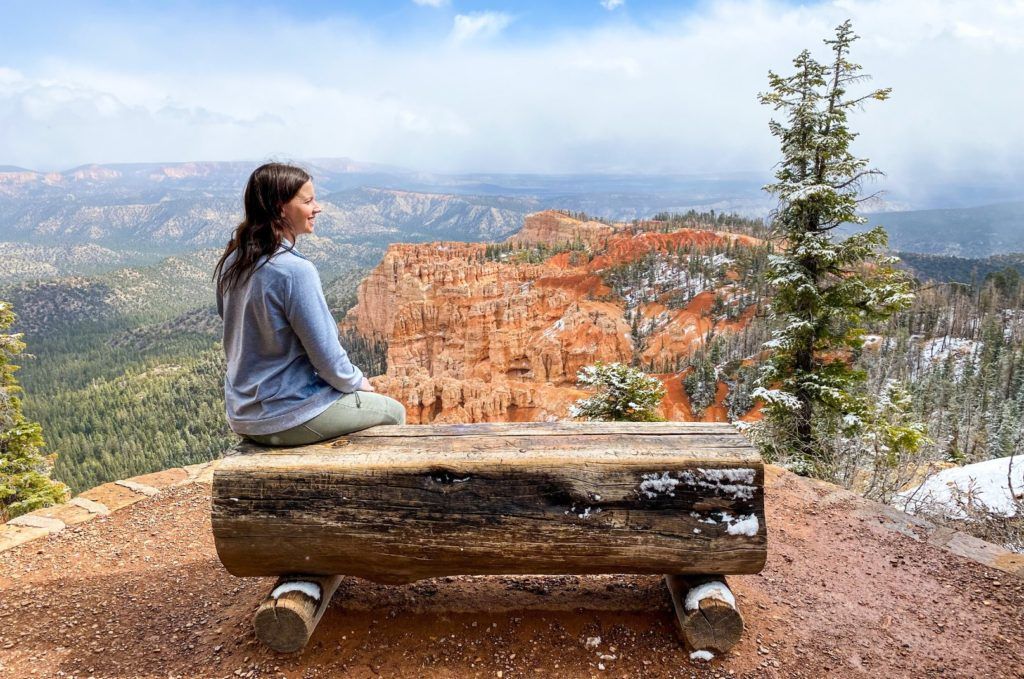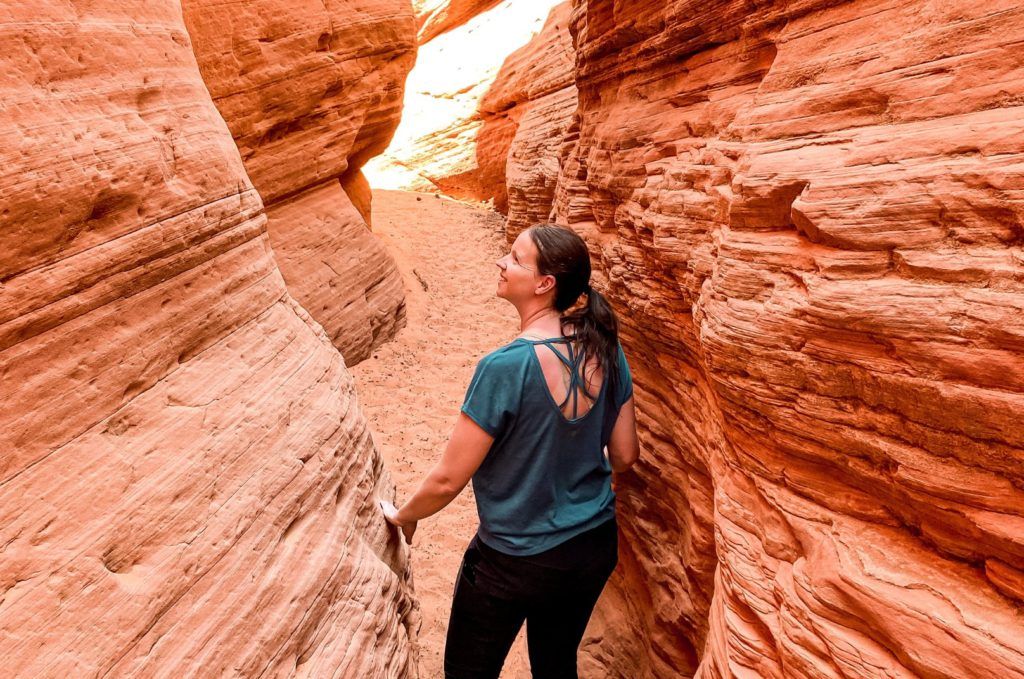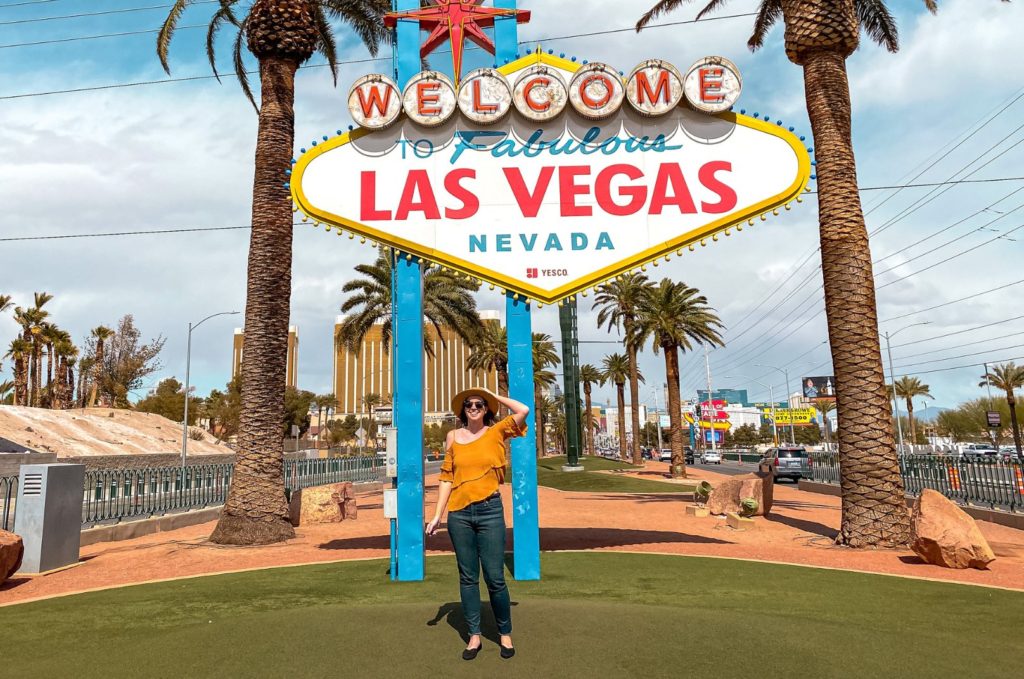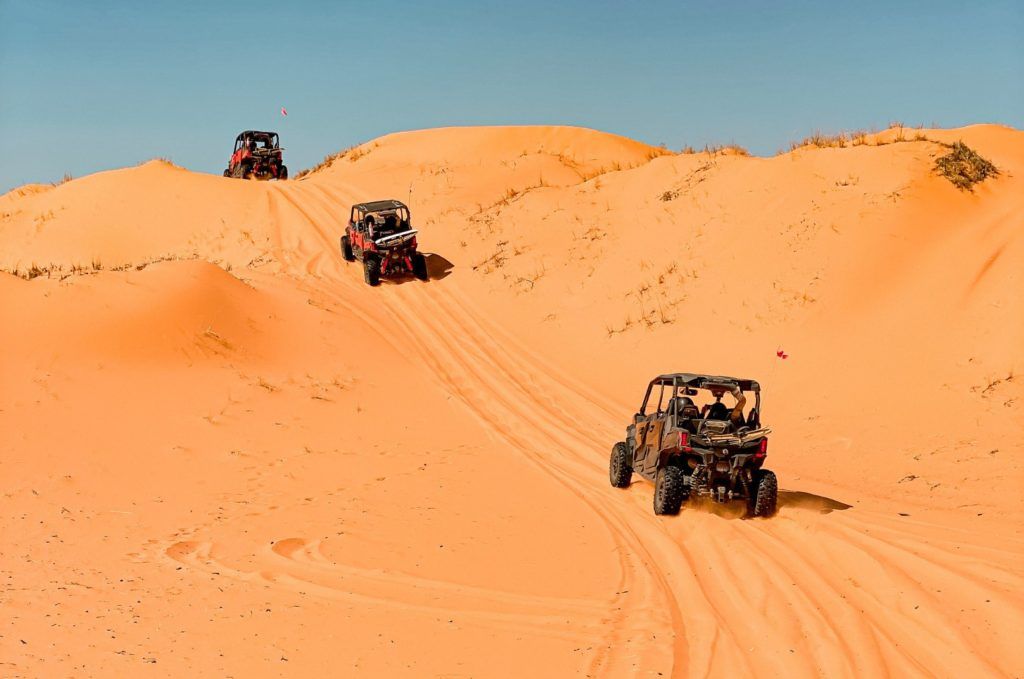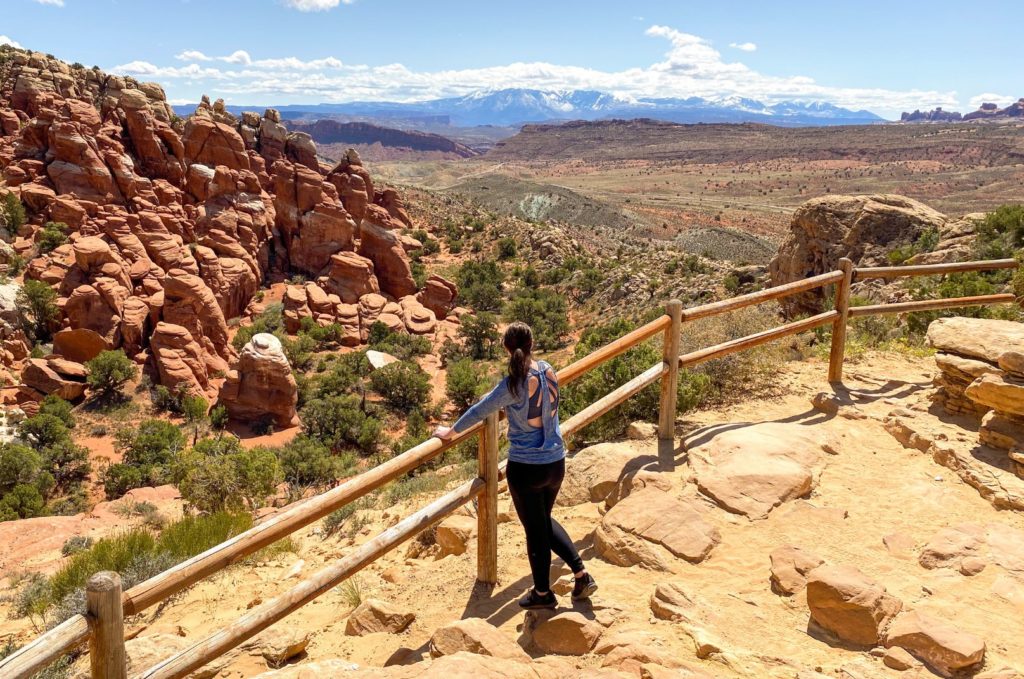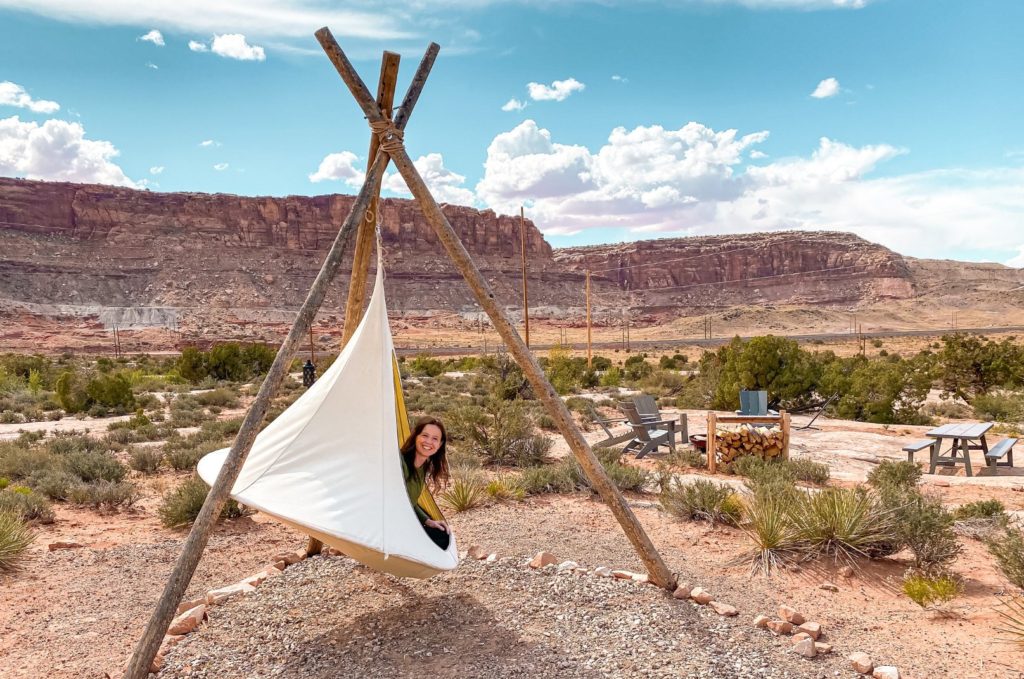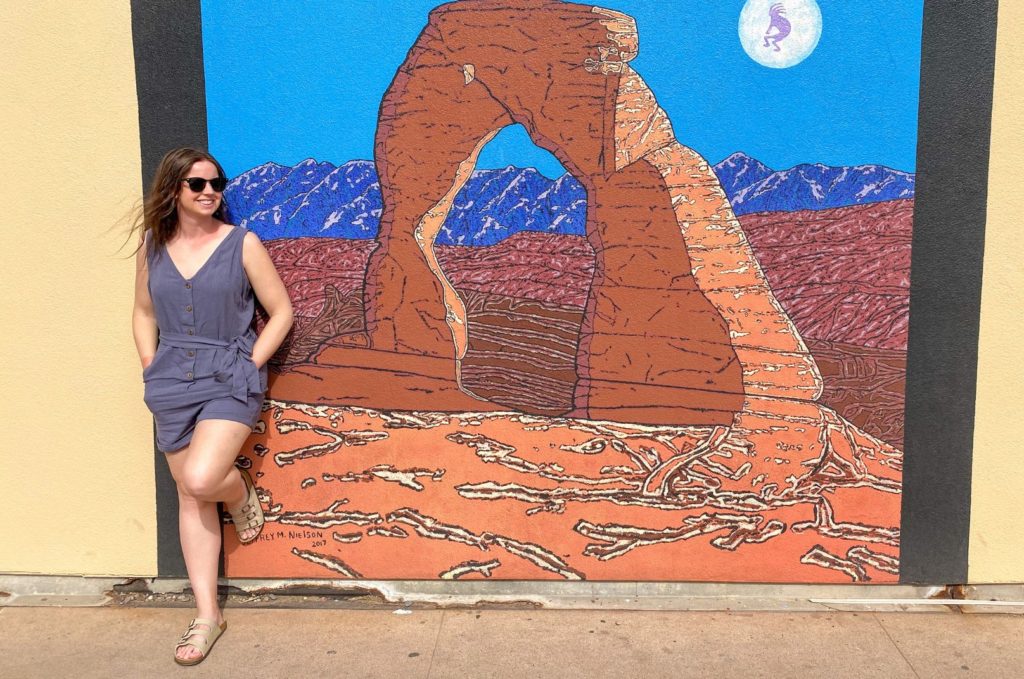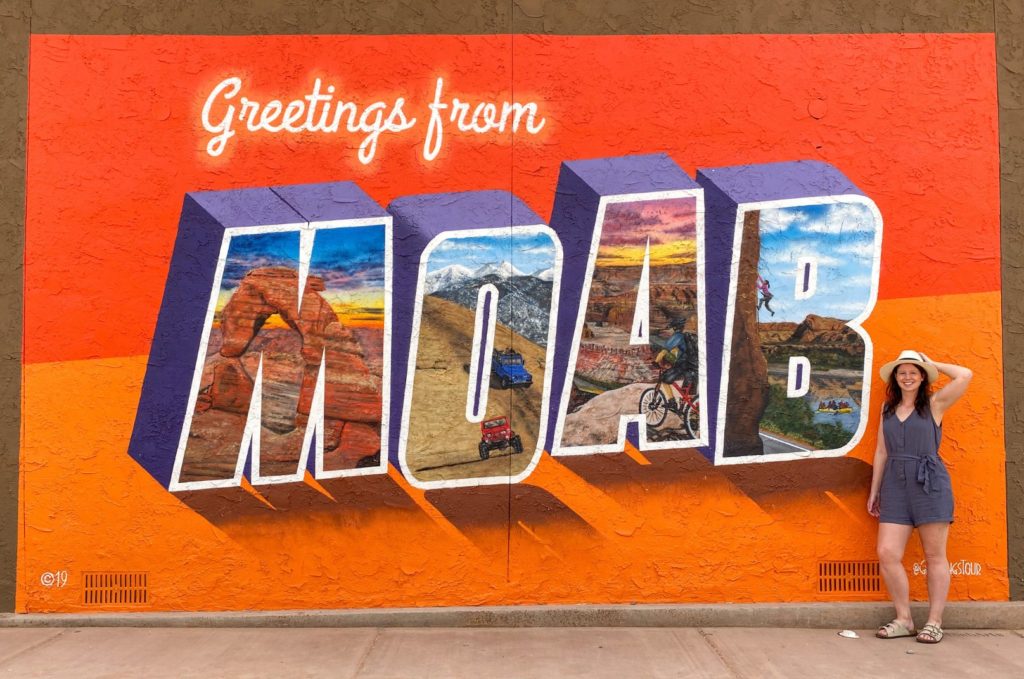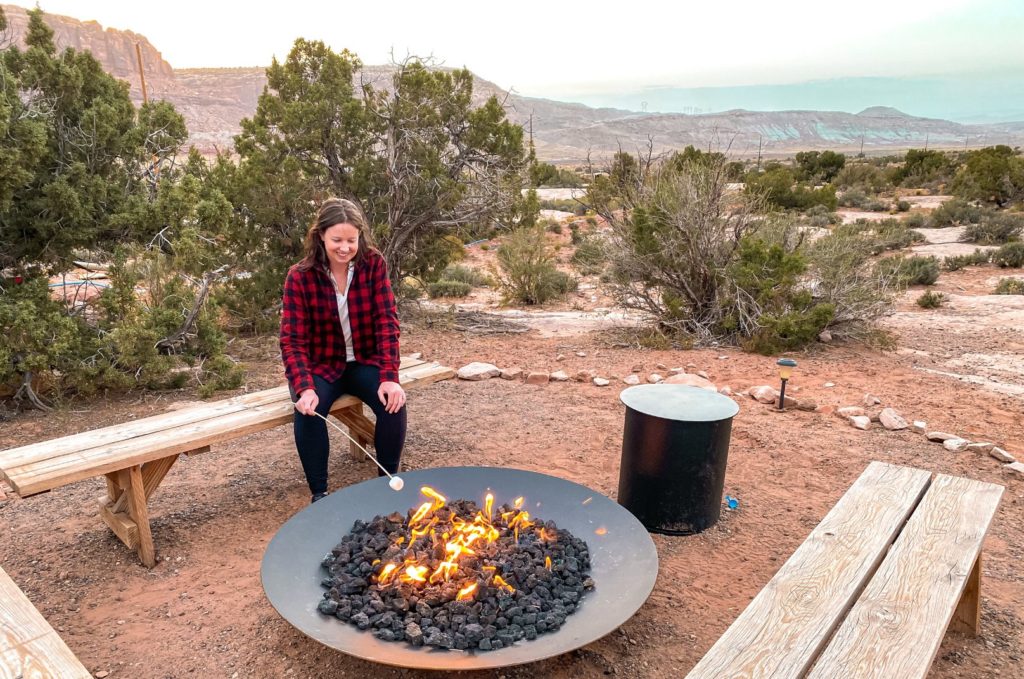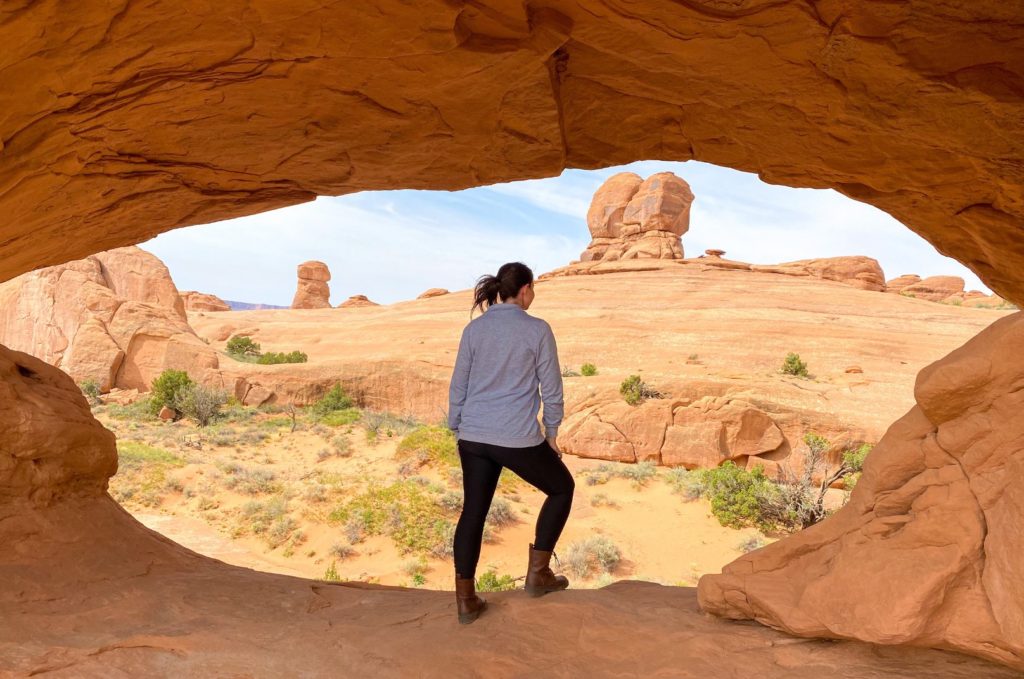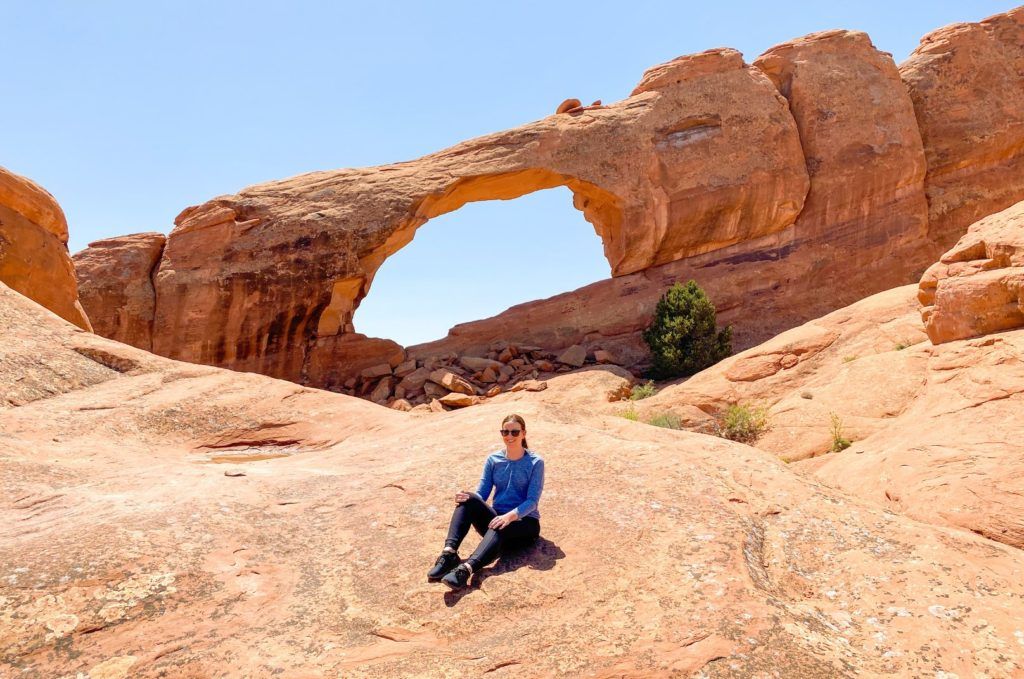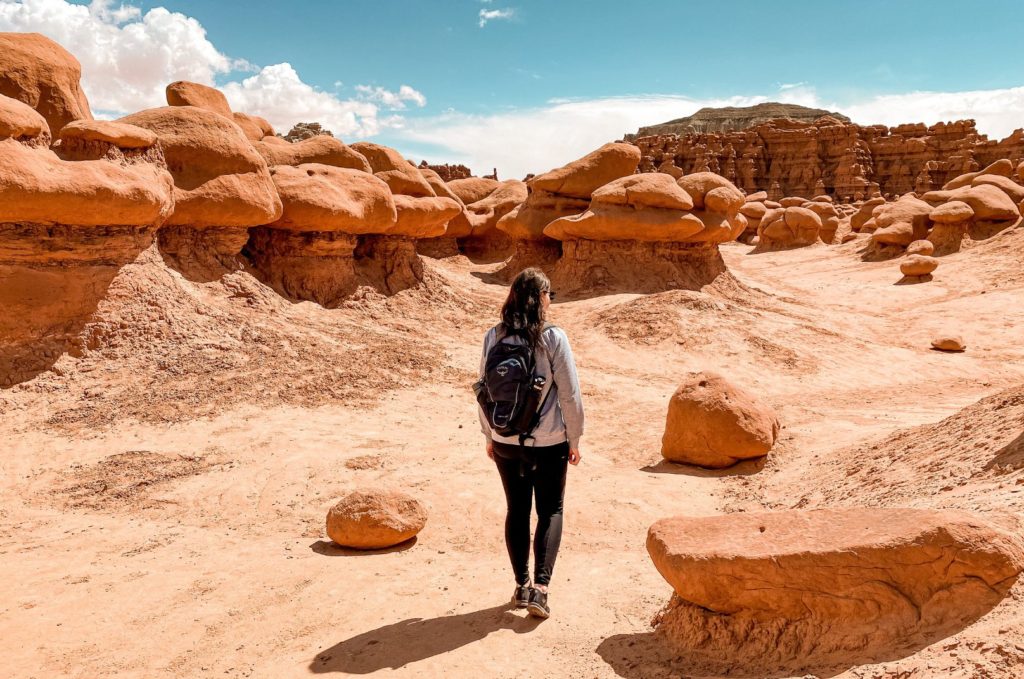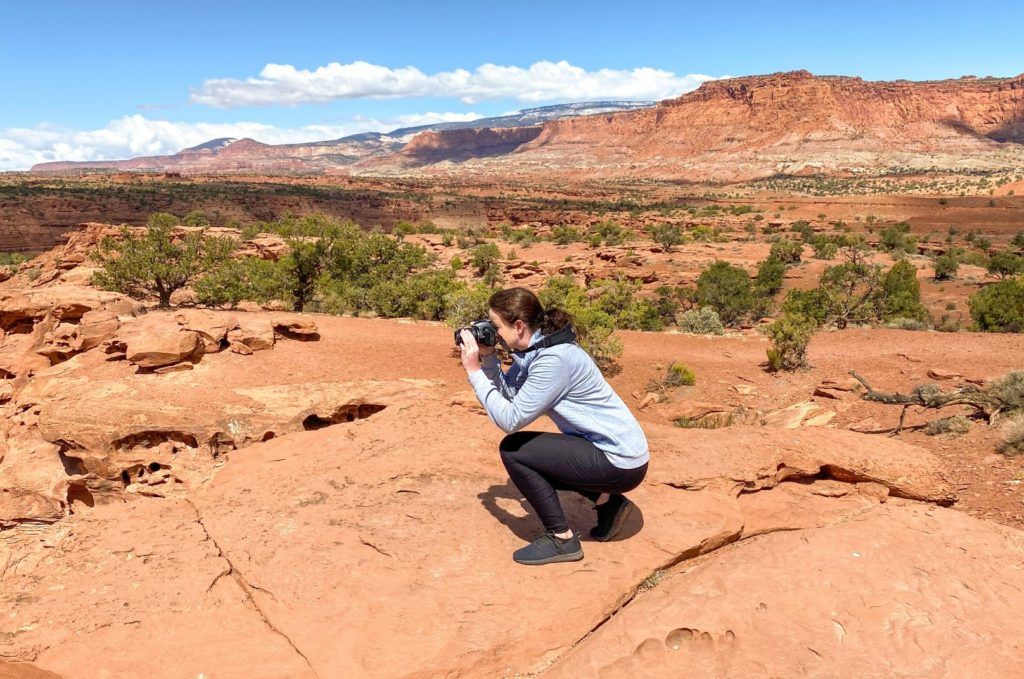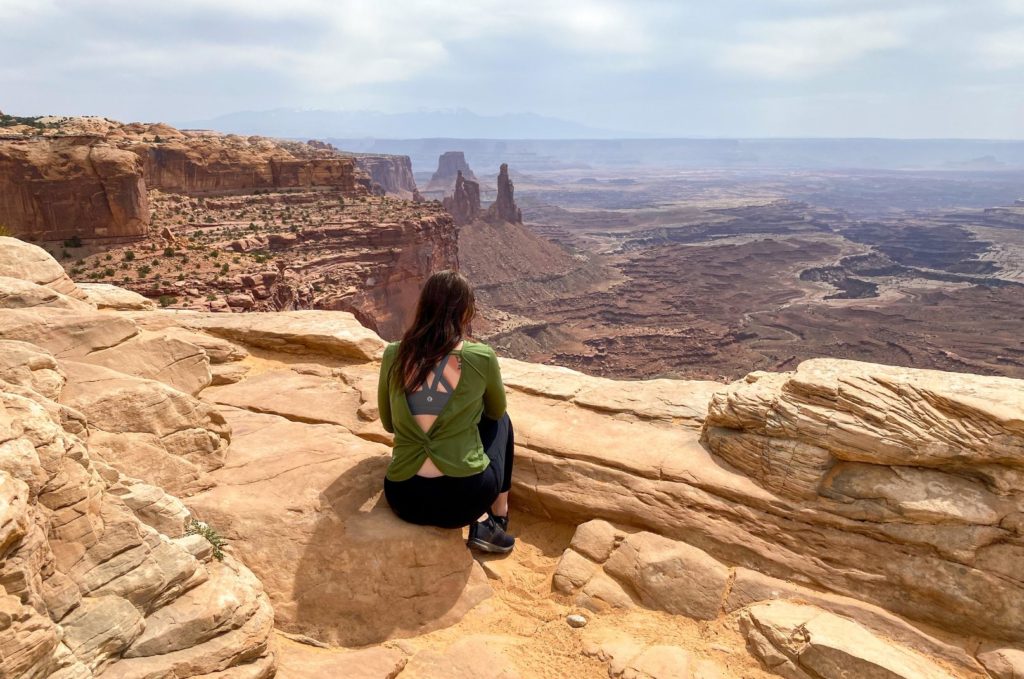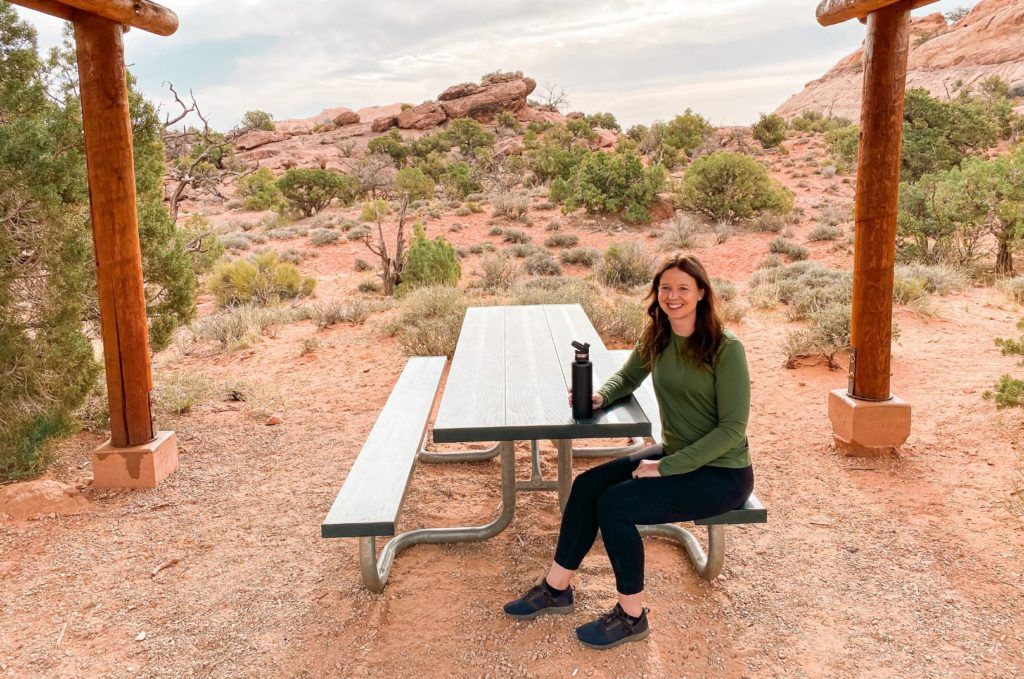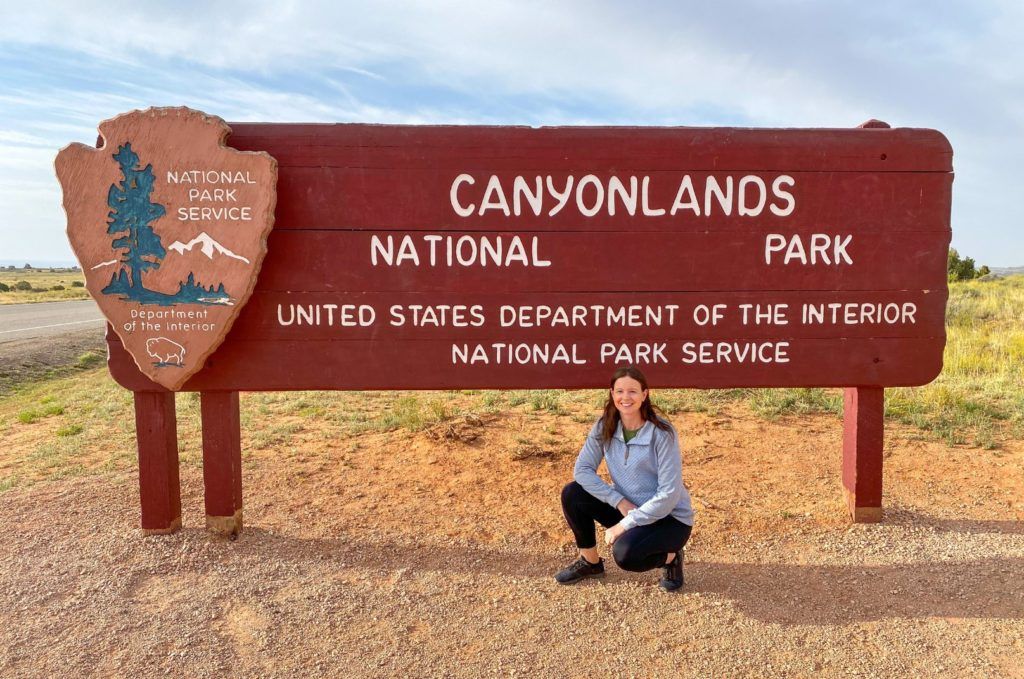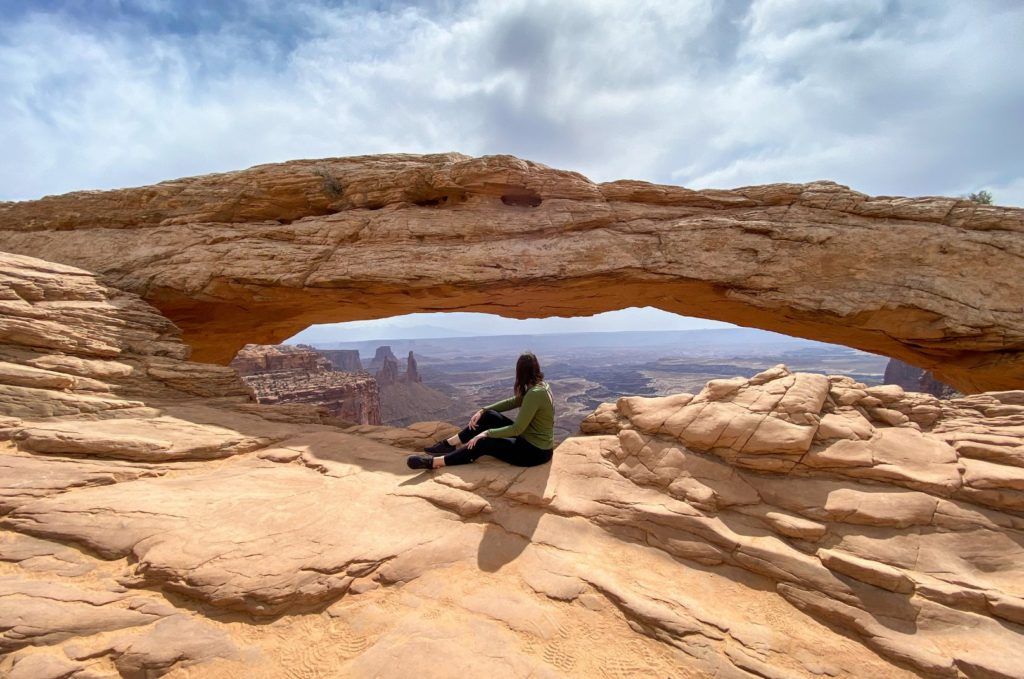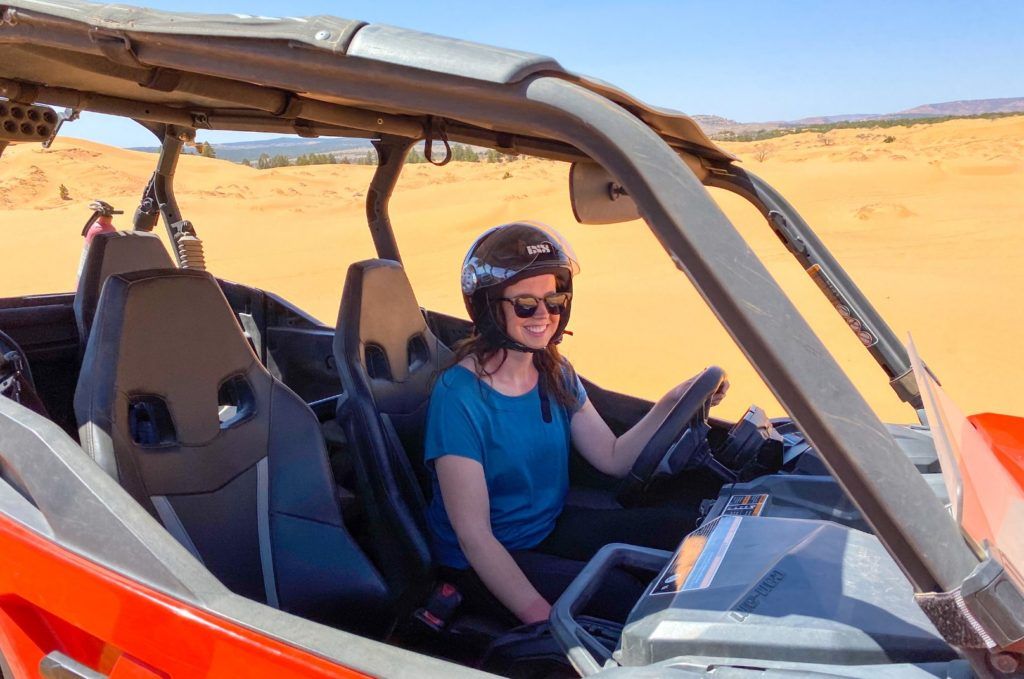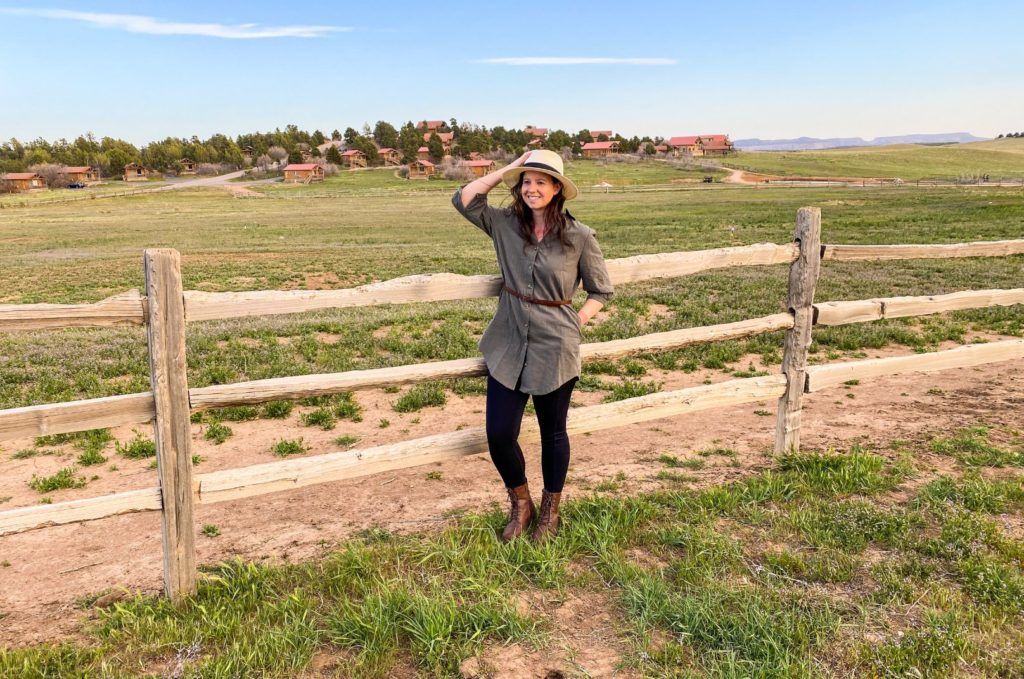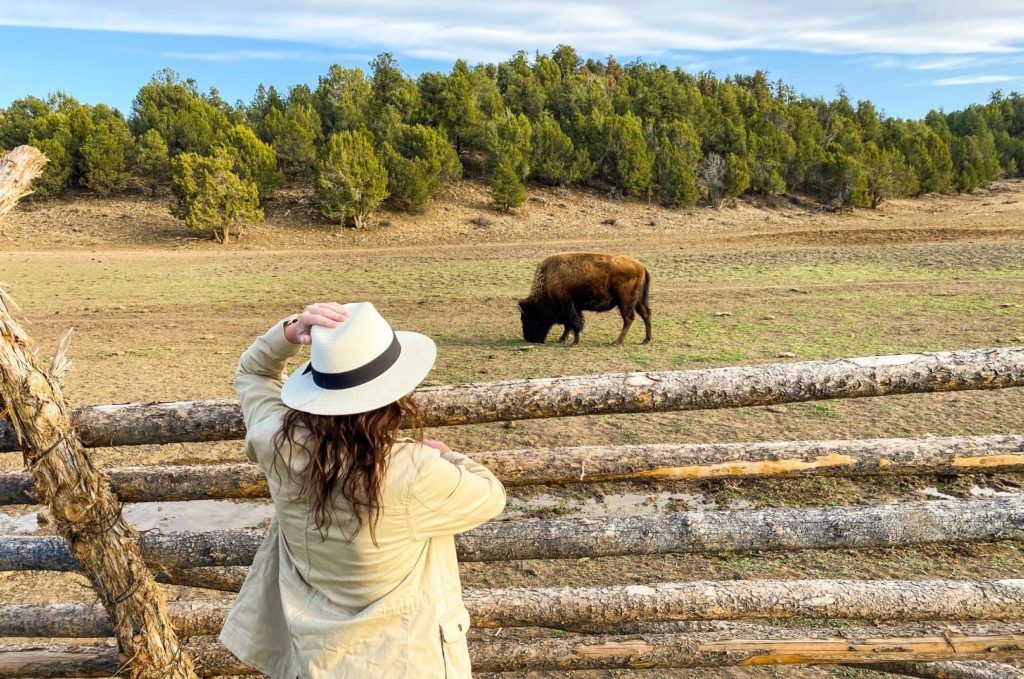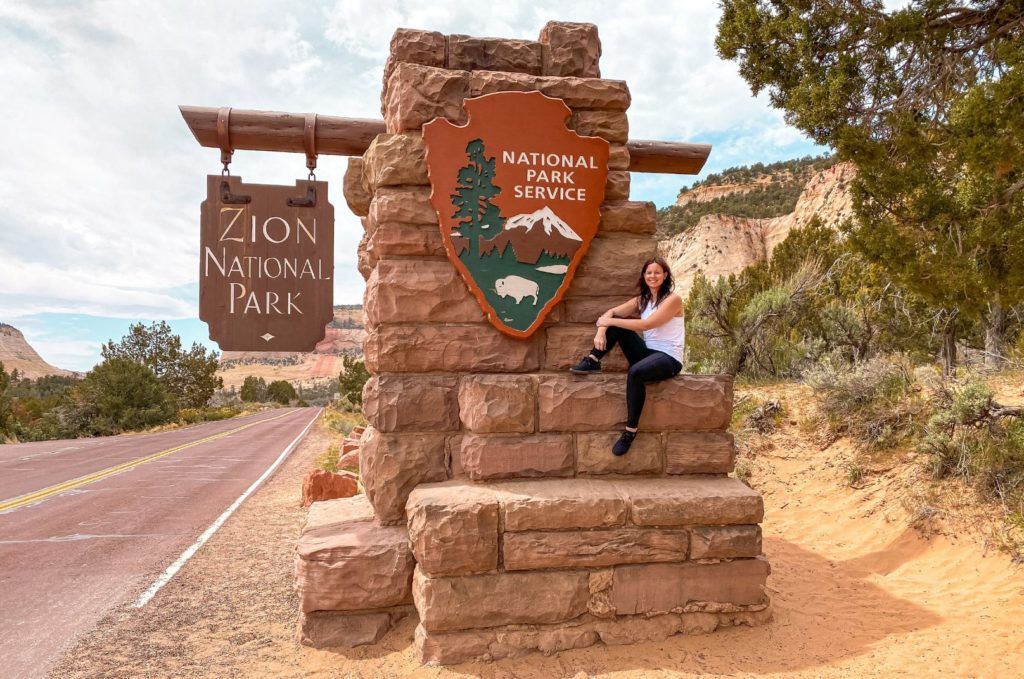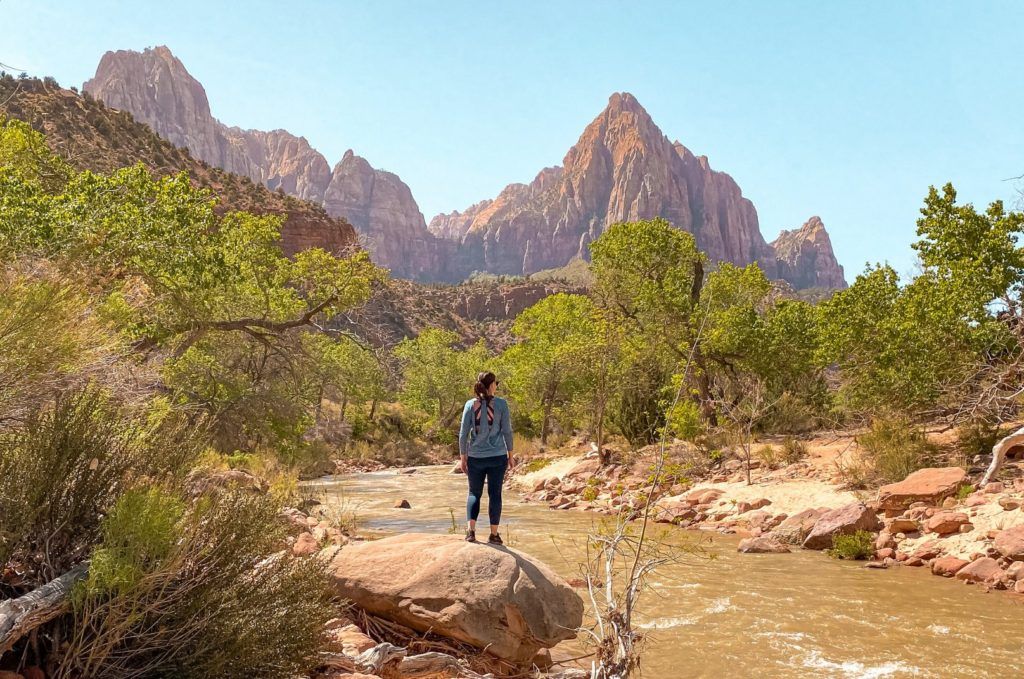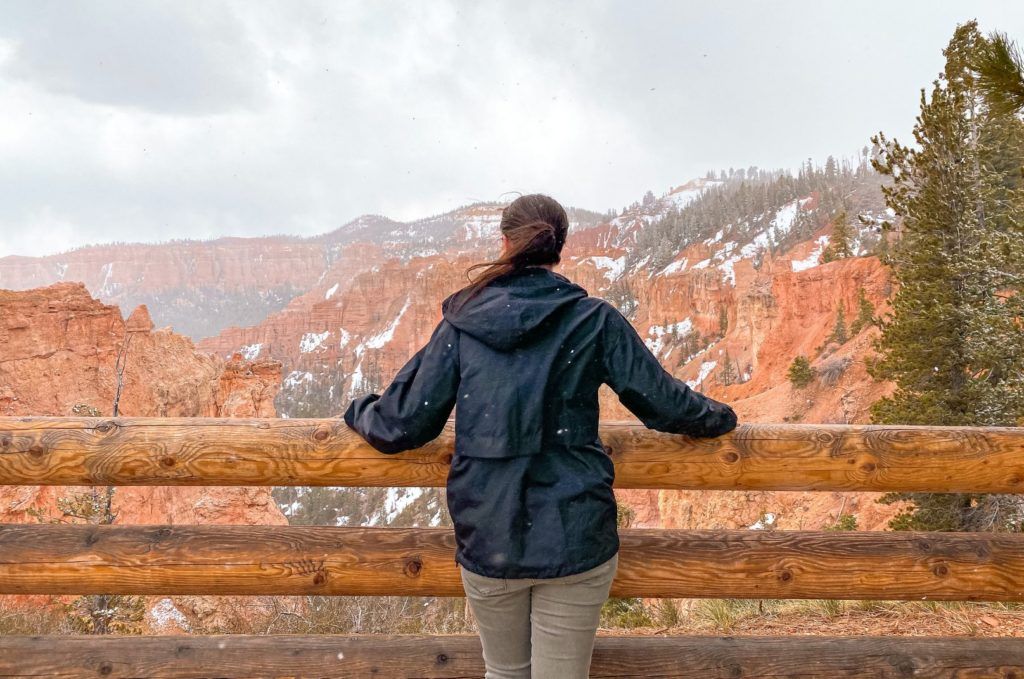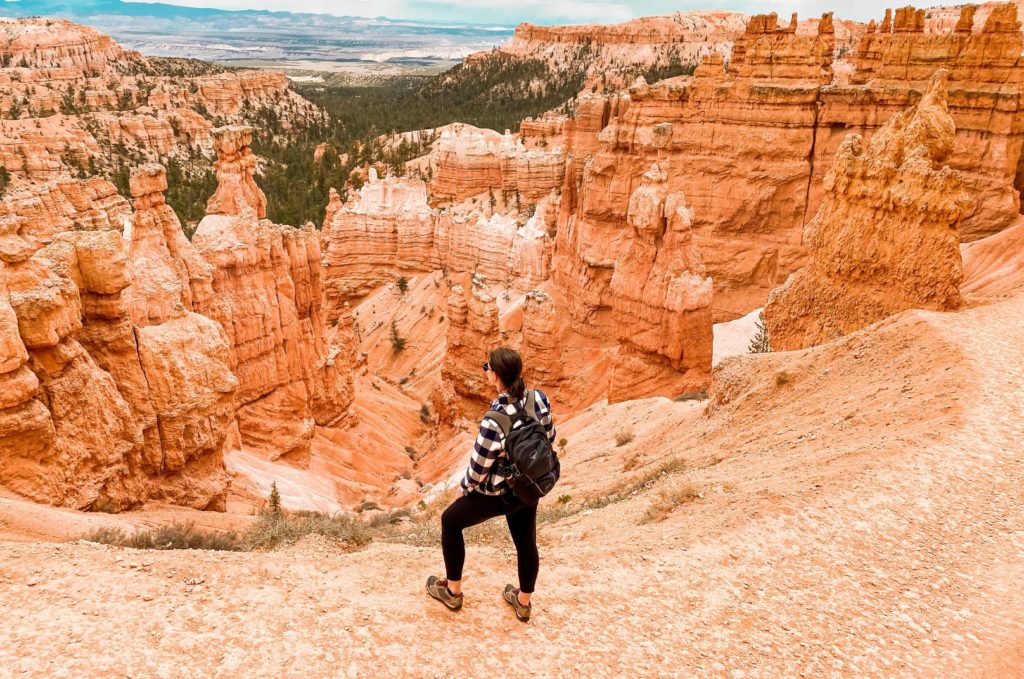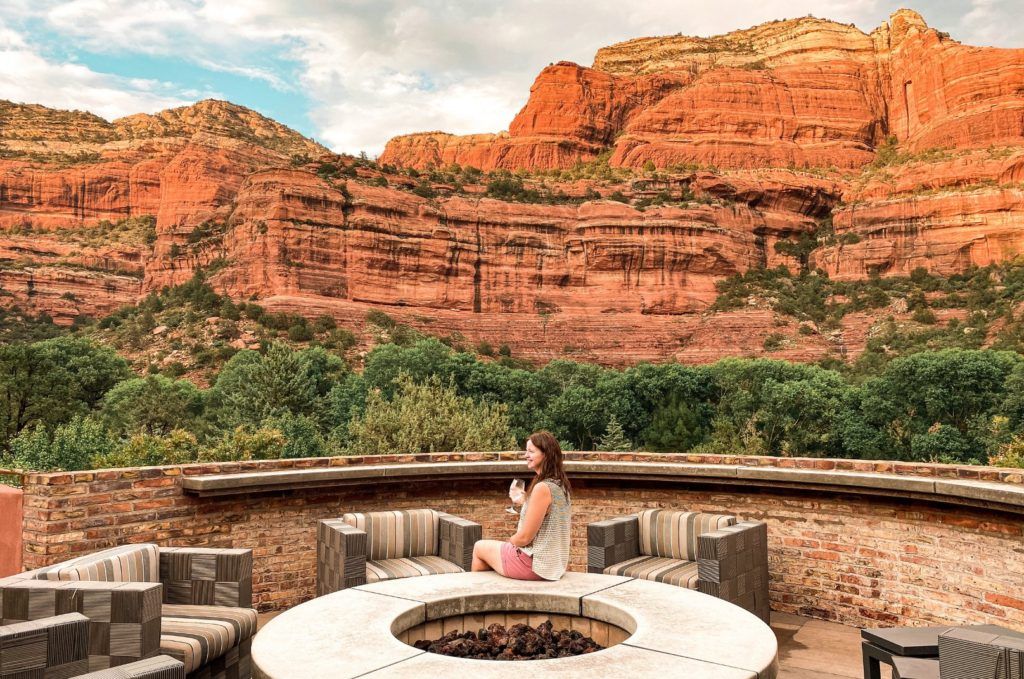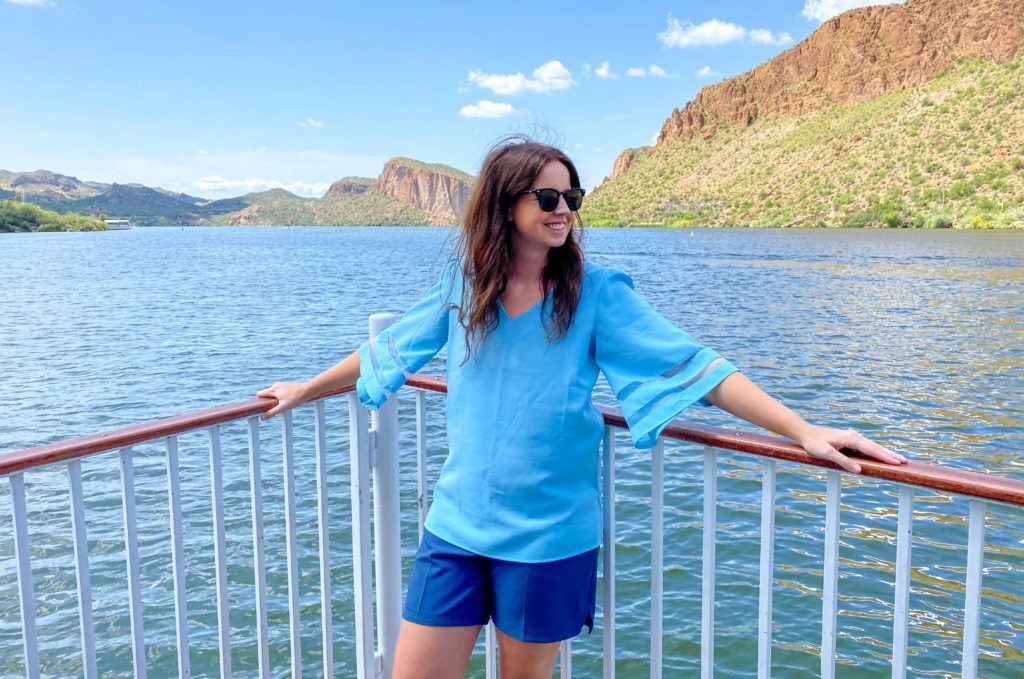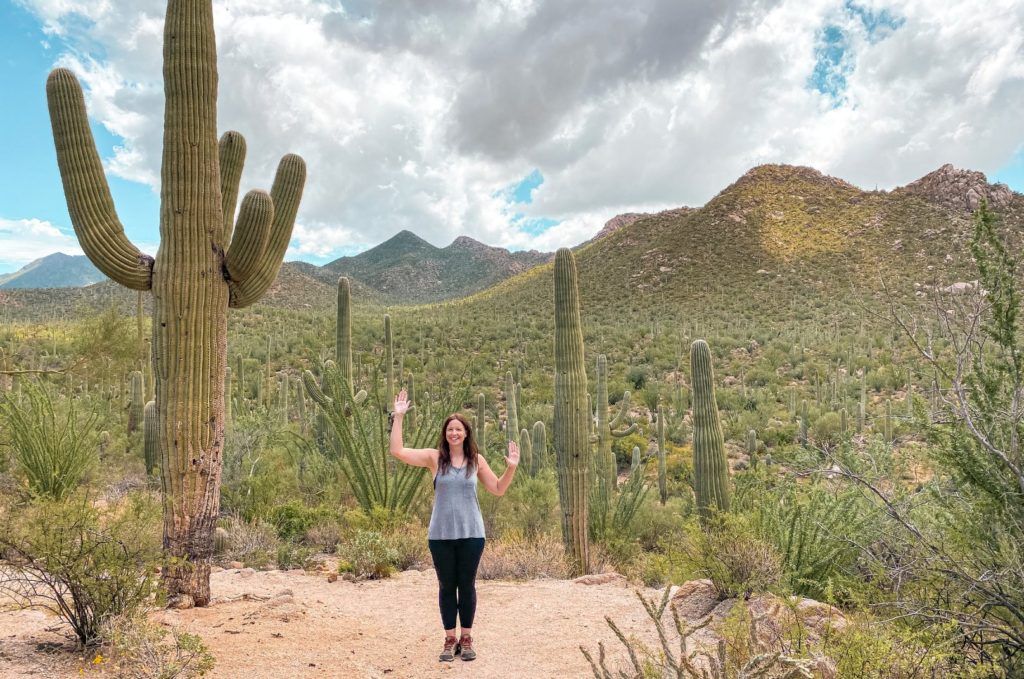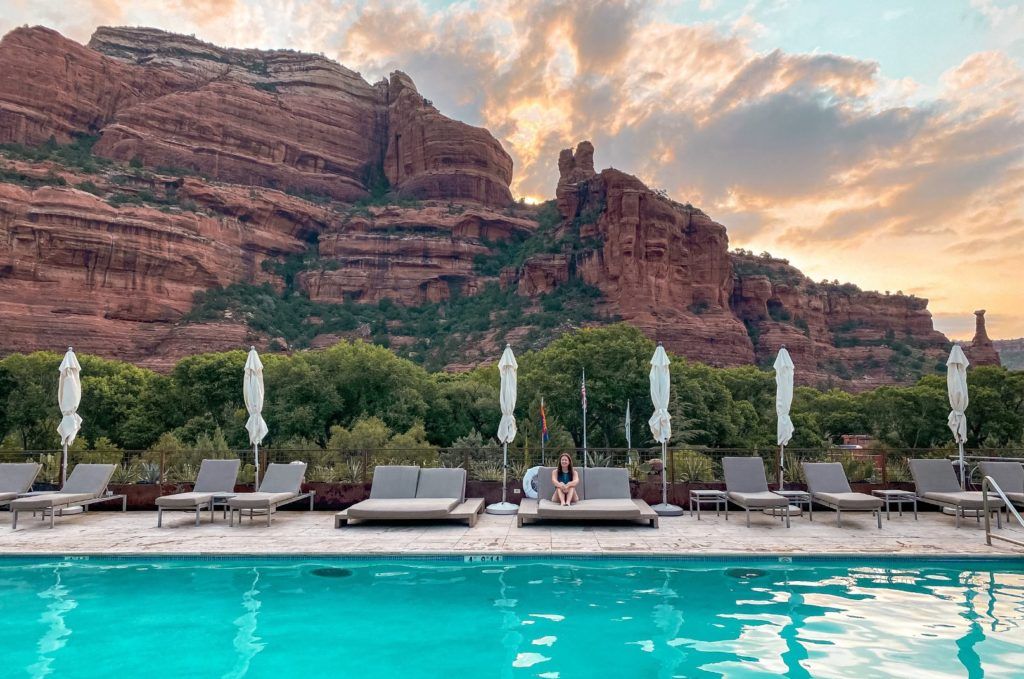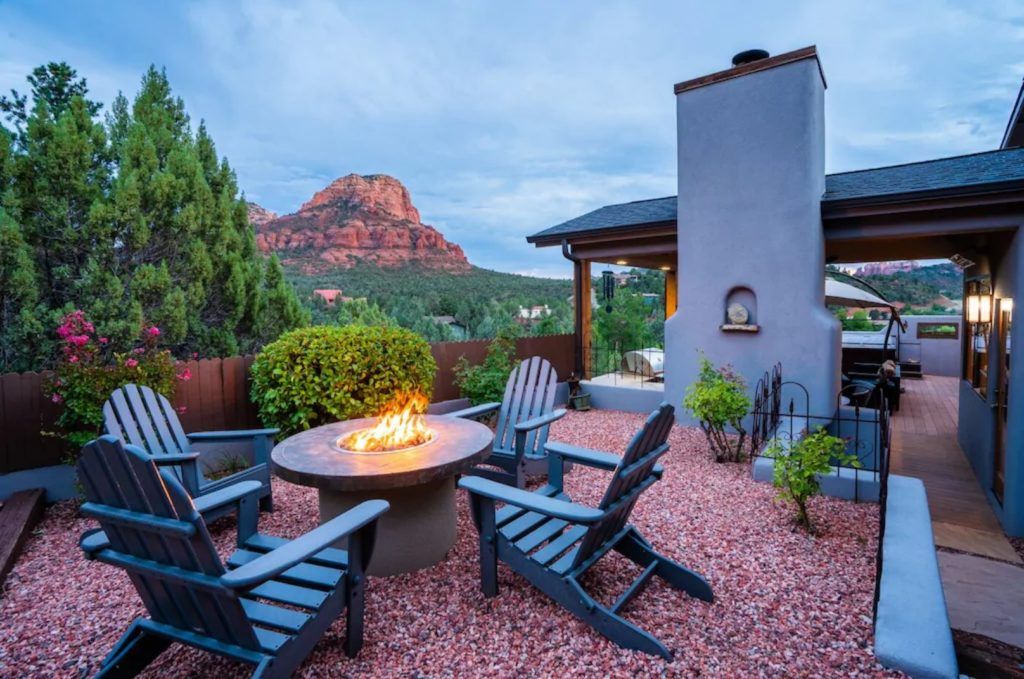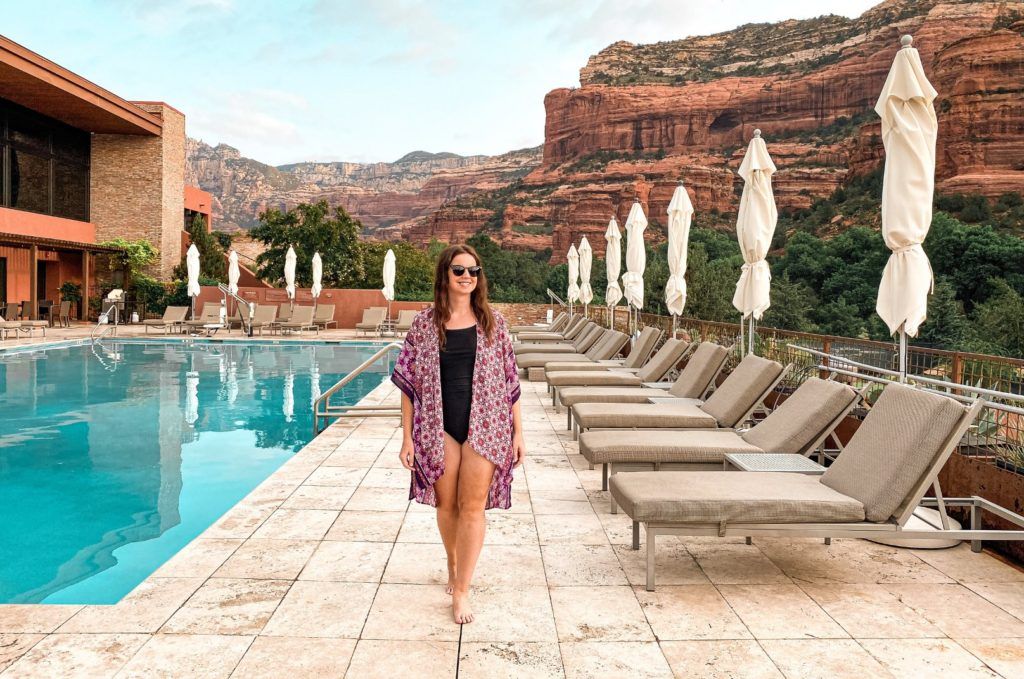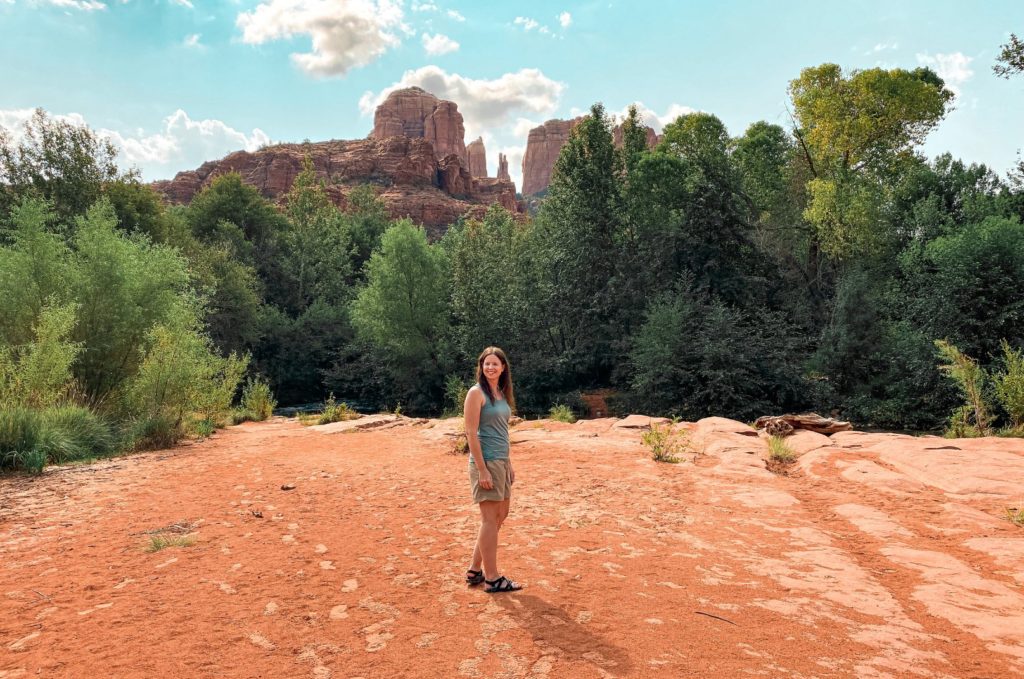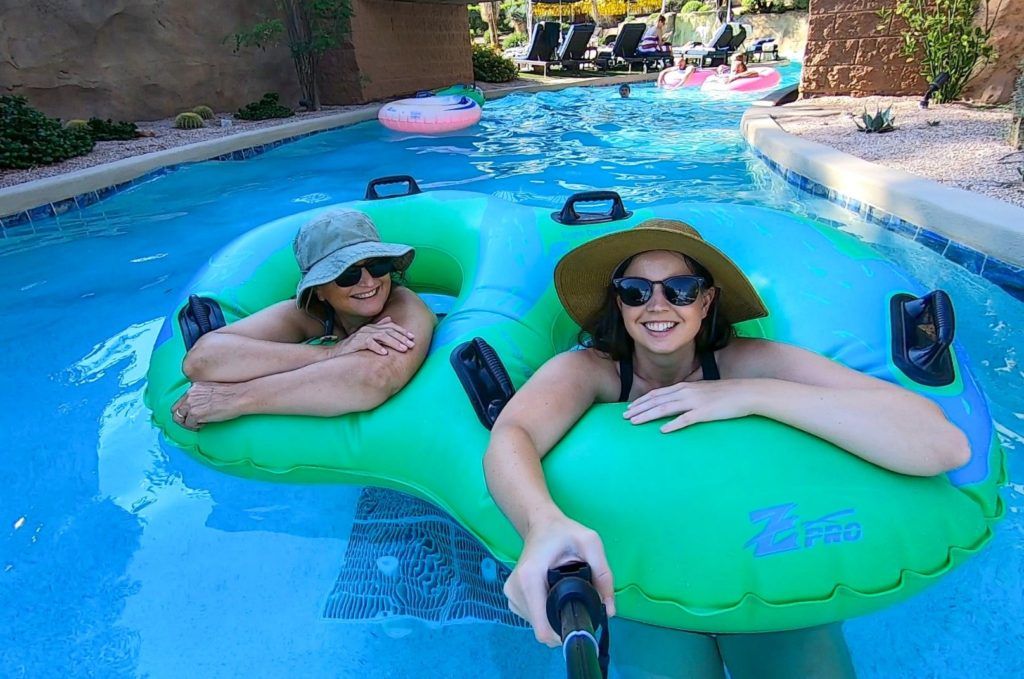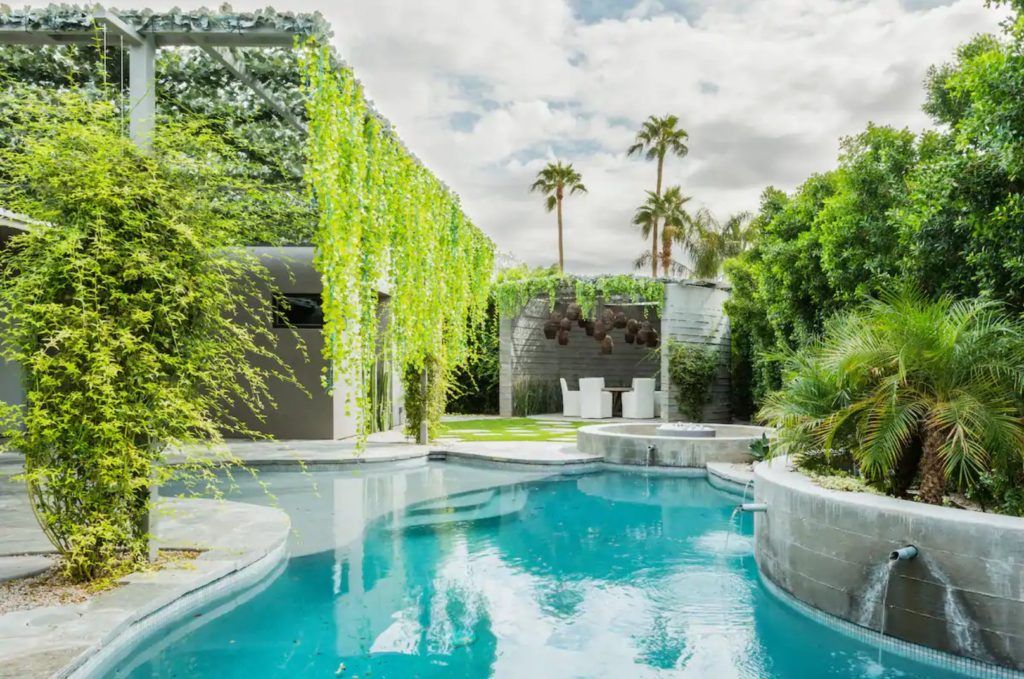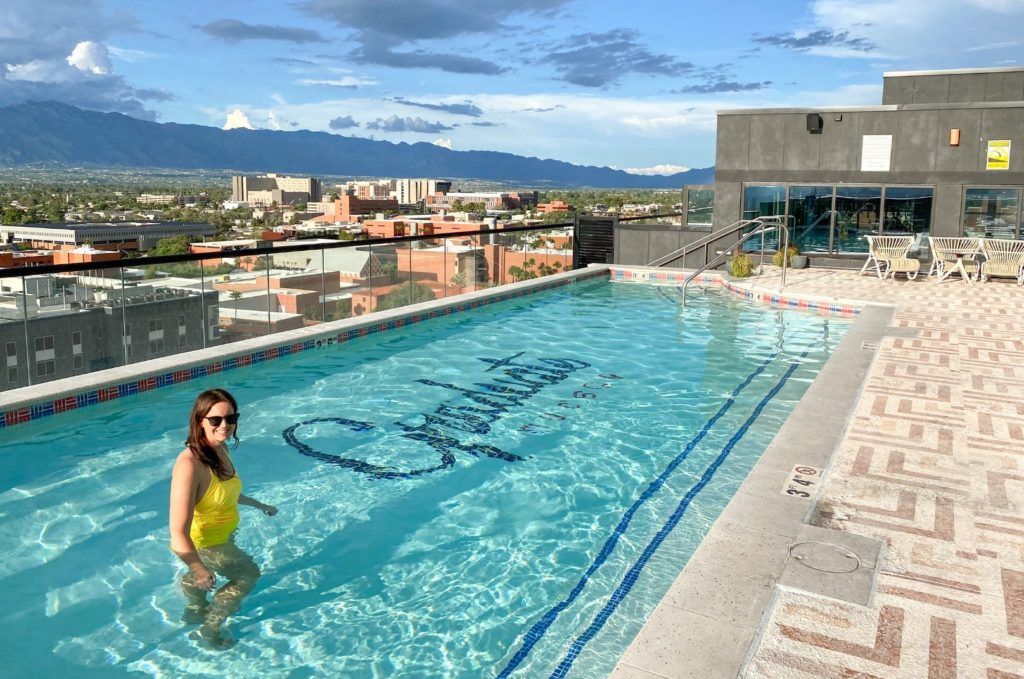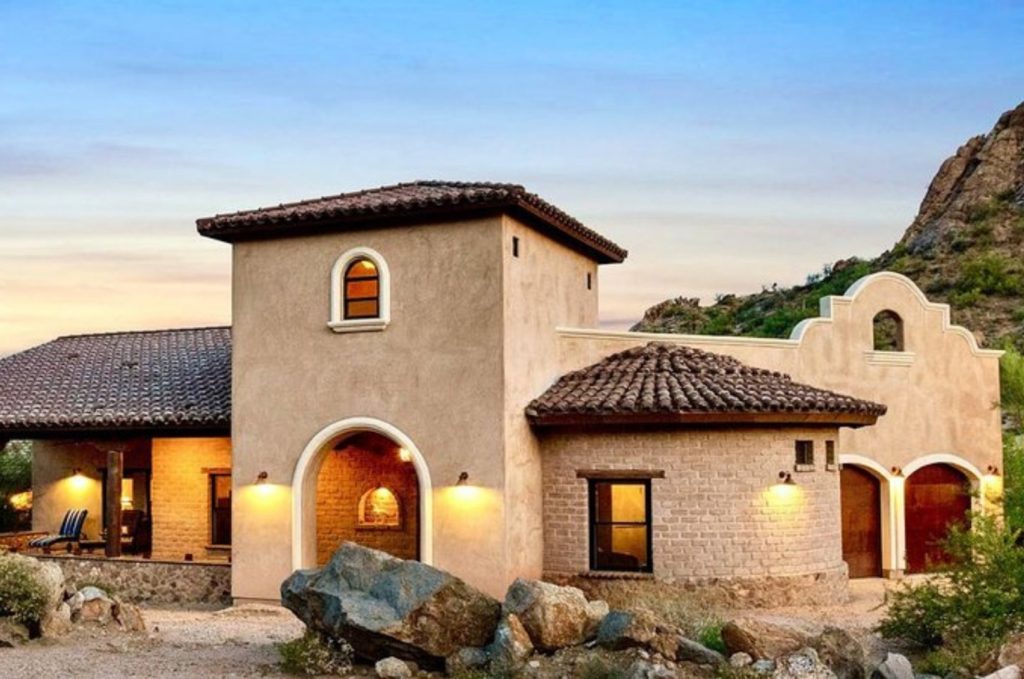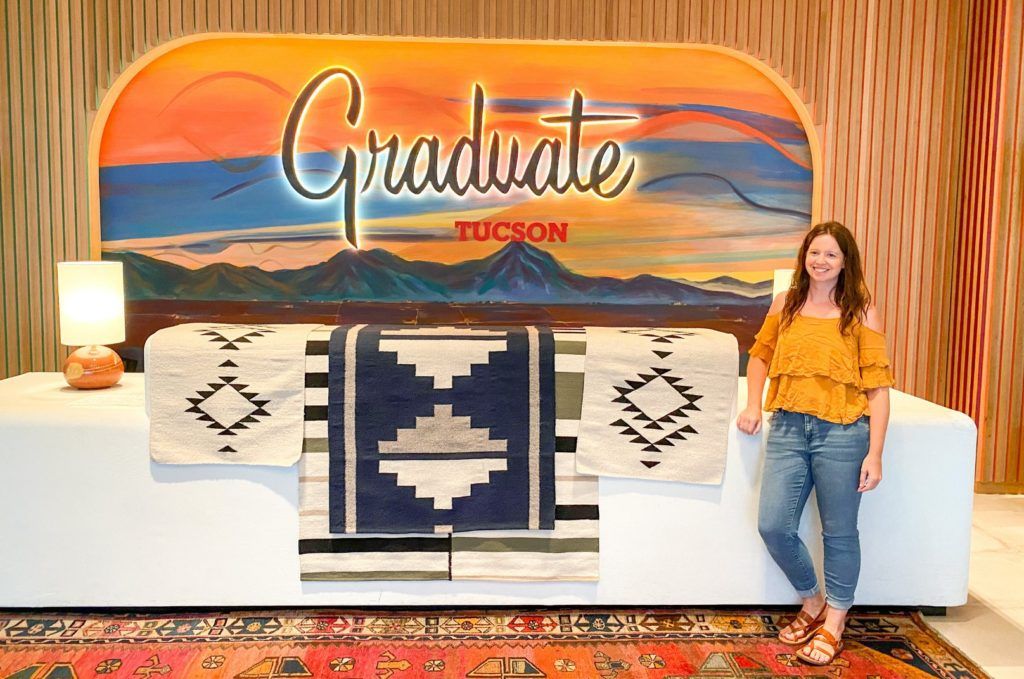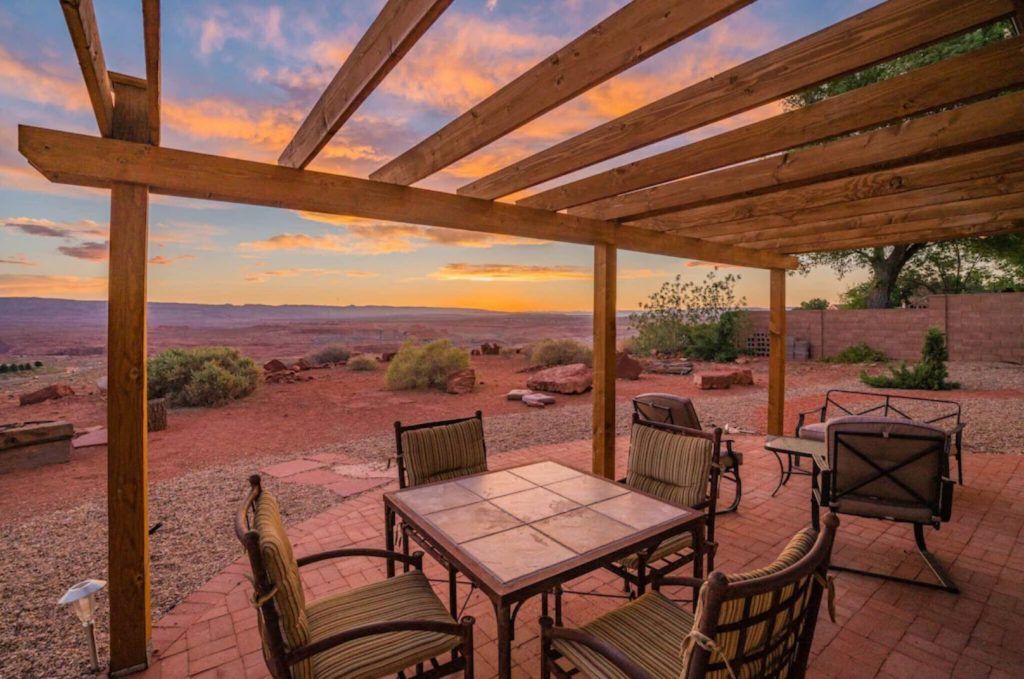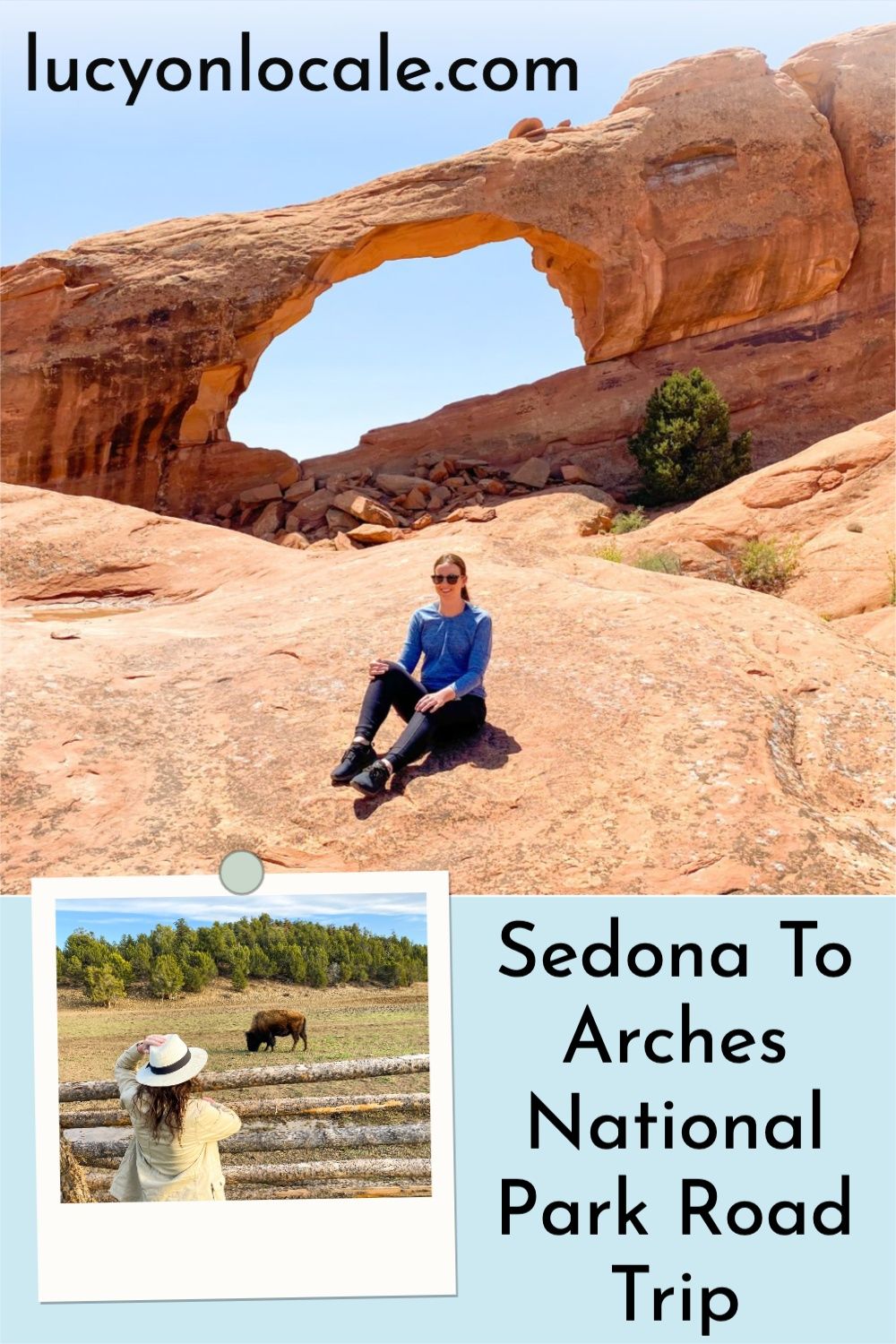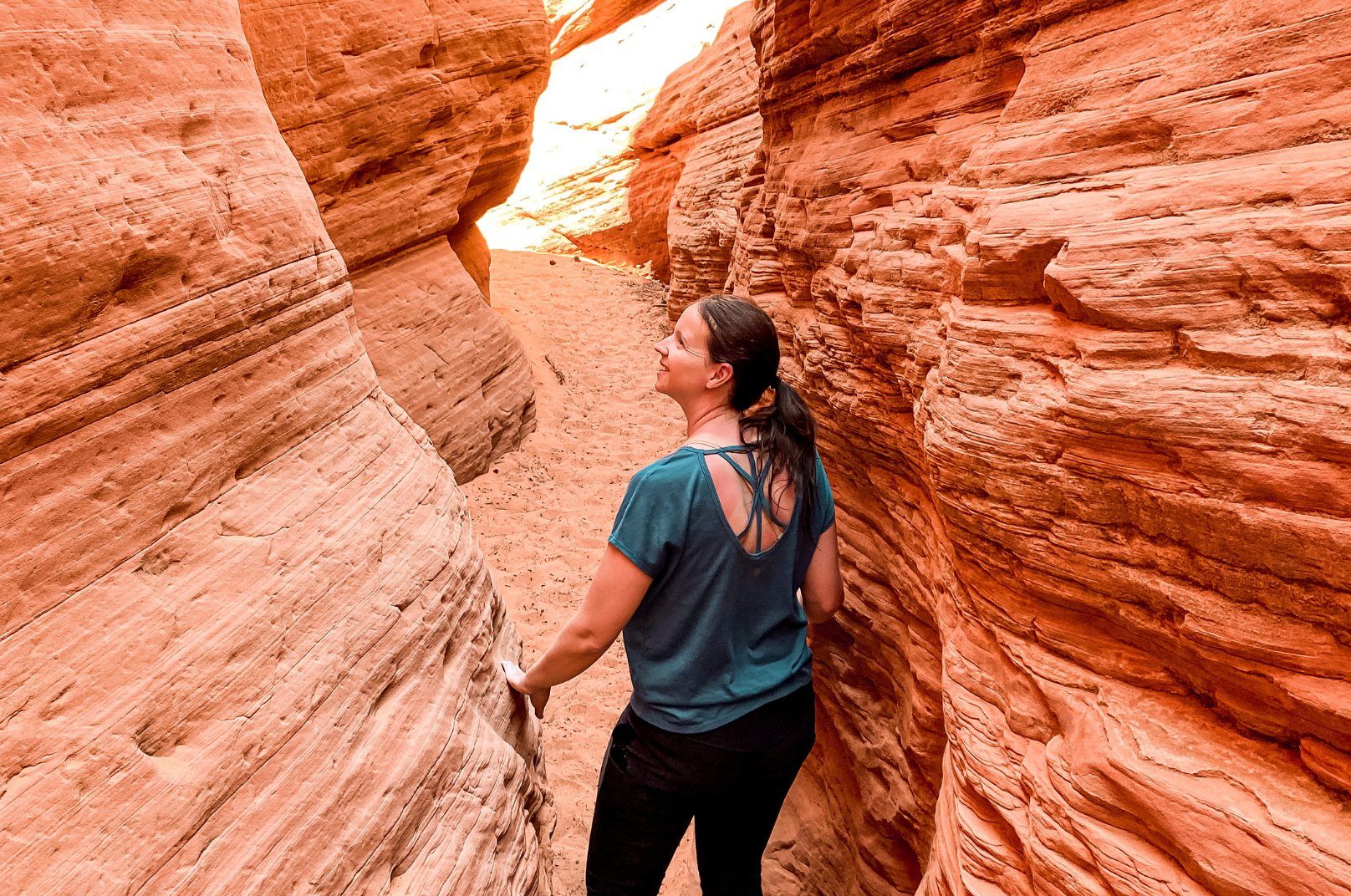
Sedona To Arches National Park Road Trip
A trip to Sedona pairs perfectly with Utah’s “Mighty Five” national parks – Zion, Bryce Canyon, Capitol Reef, Canyonlands, and Arches. So I created the perfect Sedona to Arches National Park road trip itinerary.
Road Trip Essentials
This is one of the best road trips in the U.S., and if you want to make your road trip even more epic, check out my road trip tips and tricks!
Ready to hit the open road? Here’s the ultimate Sedona to Arches National Park road trip!

Three Nights in Sedona
Day 1: On your way to Sedona, drive the Red Rock Scenic Byway. Then check into your hotel or vacation home and have dinner with a view of the red rocks at Tii Gavo, Javelina Cantina, or Hikeaway House.
Day 2: Head out early in the morning to do a hike – you want to hike early to beat the crowds, find parking, and beat the heat. My favorite hikes are the Devil’s Bridge Trail (moderate, 3.9 out and back), Cathedral Rock Trail (moderate, 1.2-mile out and back), and Boynton Canyon Trail (moderate-difficult, 7.3-mile out and back).
Then in the evening, explore and shop in downtown. Finally, either get dinner at one of my favorite restaurants – The Hudson, Cucina Rustica, or Vino Di Sedona – or take a picnic dinner to the Crescent Moon Picnic Site.
Day 3: Take a day trip to the Verde Valley wine trail. My favorite wineries are Page Spring Cellars, Javelina Leap, and Oak Creek Vineyards. If it’s summer, you should paddle the Verde River with Verde Adventures’ Water To Wine Experience.
Read More

One Night in The Grand Canyon
Day 4: Leave Sedona early in the morning to arrive at The Grand Canyon as early as possible, and explore it for the rest of the day.
The best viewpoints of The Grand Canyon are Mather Point (South Rim), Redwall Bridge (North Rim), Shoshone Point (South Rim), Desert View, and Angel’s Window (North Rim). Top hikes here are the South Rim Trail (flat, paved with shuttle stops), South Kaibab Trail (3 miles, out and back, strenuous), and the Bright Angel Point Trail (1 mile, out and back, easy).

Four Nights in Zion
Day 5: Check out of your accommodation and go ATVing at Coral Pink Sand Dunes State Park on your way to Zion National Park. Next, head towards Zion’s East Entrance, have lunch at Cordwood or Co-op Cafe, and see the bison herd usually visible on the left a few miles from the park entrance. Then drive the scenic Zion-Mount Carmel Highway to Springdale. Hike the Canyon Overlook Trail and stop at any or all of the pull-offs along the scenic drive. Arrive in Springdale and check into your hotel, Airbnb, or glamping site.
Day 6: Rent e-bikes and start riding as early as possible. Bike the Pa’rus Trail, then the Zion Canyon Scenic Drive. Go all the way to the end of the scenic drive, and stop as often as you like. You’ll want to pack out your lunch and then have dinner in Springdale or back at your accommodation.
Hike Angel’s Landing on this day (strenuous, 5.4 miles out and back, 1500 foot elevation gain, long drop-offs). You’ll need a hiking permit, so plan your biking schedule to accommodate your permit time. If you don’t want to hike Angel’s Landing, hike the West Rim Trail until it becomes the Angel’s Landing trail, then turn around.
Zion National Park Guide
Day 7: Sleep in and have brunch in Springdale. Then head to Zion’s more off-the-beaten-path Kolob District. Drive the scenic Kolob Canyons Road and hike the Timber Creek Overlook Trail (easy-moderate, 1 mile, out and back, 100 feet elevation gain). Then head back to Springdale to shop, explore the riverfront town, and eat.
Day 8: Hike The Narrows (Bottom-Up route via the Riverside Walk, 9.4 miles out and back). The Narrows hike averages about 6 hours, and the trail is the Virgin River, so you’ll be wading through ankle to waist-deep water. You’ll want to rent specialized equipment – shoes, a dry suit, neoprene socks, a waterproof bag, and a walking stick – and you’ll need to monitor the weather because flash floods, cold water temperatures, and high water levels can be hazardous. Plan on this hike taking most of the day, and you’ll want to bring a pack-out lunch, plenty of water, and snacks.
If you don’t want to hike The Narrows, hike the Watchman Trail in the morning, have a picnic lunch or eat in Springdale, then in the afternoon, hike the Lower and Middle Emerald Pools Loop, and if you’re up for it, continue to the Upper Emerald Pool.

One Day in Bryce Canyon
Day 9: Check out of your Zion accommodation early this morning and head to Bryce Canyon. Start with the Queen’s/Navajo Combination Loop. Hike down the Queen’s Garden trail at Sunrise Point, then take the connecting trail to the Navajo Loop Trail. Next, hike up the Wall Street side of the Navajo Loop to Sunset Point (if you’re here in Winter, Wall Street is closed, and you’ll need to hike up the Two Bridges side of the Navajo Loop). End your hike with the flat, easy walk along the Rim Trail back to Sunrise Point.
Bryce Canyon National Park Guide
Next, take a lunch break. Then do the scenic drive to Rainbow Point, making sure you stop at all the named viewpoints along this route.
Then drive to your Capitol Reef National Park accommodation.
Read More
The best hotels, vacation homes, and glamping near Bryce Canyon National Park

One Night in Capitol Reef
Day 10: Check out of your accommodation. Start your day in Capitol Reef National Park with the scenic drive on Highway 24 until you reach the visitor center. The best stops on this portion of 24 are Panorama Point, Sunset Point Trail, Goosenecks Overlook, and the pull-out in front of The Castle.
After you stop at the visitor center, drive on the scenic road through the park, making sure to stop at as many pull-offs as possible. When you get back to the Fruita Historic District, have a picnic lunch by the Fremont River, explore the historic buildings, and check out the fruit orchards.
Then head back to Highway 24, going west until you get to the Hickman Bridge/Rim Overlook trailhead. If you want a moderate hike, opt for Hickman Bridge (1.8 miles out and back, 400 ft elevation gain, 1.5-2 hours), which takes you to a natural bridge with beautiful canyon views. If you’re up for a strenuous hike for incredible views of most of the park, choose the Rim Overlook trail (4.6 miles out and back, 1600 ft elevation gain, 2.5-3 hours).
Finish your day by driving the rest of scenic Highway 24 to the western side of the park, then head on to Moab.

Four Nights in Moab
Day 11: Head to Arches National Park early in the morning. Start with the Delicate Arch hike (3-mile round trip, moderate, walking along rock ledges, plan on this taking at least three hours). Next, stop at the Salt Valley and Fiery Furnace Viewpoints. Then hike out and back to Sand Dune Arch.
If the Delicate Arch hike is too strenuous for you, walk to the Upper Delicate Arch Viewpoint (200 feet, easy, 15 minutes round trip), then visit the Salt Valley and Fiery Furnace Viewpoints, then hike out and back to Sand Dune Arch and Broken Arch (1.5 miles round trip, easy-moderate, about an hour).
Have lunch near the Devils Garden Campground, then hike behind the Amphitheatre to see Skyline Arch. Most people view Skyline Arch from the main road, but the view is better from the amphitheater side, and you can usually have the arch to yourself.
Next, drive back down the main park road and stop at Panorama Point and Garden of Eden. Then explore Double Arch and hike the North Window/South Window/Turret Arch loop.
On your way out of the park, end your day by seeing Balanced Rock, the Petrified Dunes Viewpoint, Courthouse Towers Viewpoint, and La Sal Mountains Viewpoint.
Day 12: Spend the morning back in Arches hiking as much of the Devils Garden Trail as possible. I recommend getting at least as far as Navajo Arch, Partition Arch, and Landscape Arch. Pace yourself, and don’t hike further out than you can walk back.
Then in the afternoon, do a guided 4×4 tour of the backcountry. More than 1.5 million people visit Arches National Park every year, but only about 15,000 venture into the backcountry. So a 4×4 ride is a way to escape the crowds and explore a part of the park that few people ever visit.
Day 13: Hire a 4×4 vehicle and driver to explore the Island In The Sky district of Canyonlands National Park. After you enter the park and stop at the visitor center, pull off at both of the Shafer Canyon Overlooks. Then head to the Mesa Arch trailhead and do this easy, 0.6-mile round trip, 30-minute hike.
Next, continue on the park’s scenic drive towards Upheaval Dome. Drive to the end and turn around, stop at any pullouts that you can, and make the short drive to the Green River Overlook.
Then drive towards Grand View Point Overlook at the other end of the park. Stop at any pull-offs on your way to the end of the scenic drive. Park at the Grand View Point Overlook trailhead, and hike this trail out and back as far as time allows.
Spend the rest of the day driving through the Canyonlands backcountry.
Day 14: Head home or to your next destination!

Shop My National Park Essentials

Is there anything you’d add to this Sedona to Arches National Park road trip? Let us know in the comments!

Plan The Rest Of Your Trip

Recommended Tours in Arches National Park

Frequently Asked Questions
How far is Arches National Park from Las Vegas?
The distance from Arches National Park to Las Vegas is about 400 miles (seven hours) from each other. The best way to visit both of these places is on a Sedona Utah “Mighty Five” road trip that also includes Bryce Canyon, Capitol Reef, Zion, and Canyonlands.
Day 1: Las Vegas. Settle into your hotel or vacation home, then have dinner, see a show, and gamble at one of The Strip casinos. I highly recommend an illusion or Cirque du Soleil show.
Day 2: Las Vegas. Sleep in and have brunch at one of the best restaurants in Las Vegas. In the morning, drive an expensive sports car with the Exotics Racing VIP Experience. Then eat lunch and do a self-guided craft beer tour on “Brewery Row” – my favorite stops are CraftHaus Brewery, Able Baker Brewing, HUDL Brewing Company, and Nevada Brew Works.
Next, tour the Neon Museum, ride the Slotzilla Zip Line, visit the Mob Museum and find a “secret” speakeasy, then party on Fremont Street or head back to The Strip for the rest of the night.
Day 3: Las Vegas. Sleep in and have brunch at The Venetian, then do a gondola ride. Ride The High Roller, have lunch, satisfy your sweet tooth at Hershey’s Chocolate World and/or M&M’s World, and play Topgolf (which has an on-site pool). Watch the fountain show at The Bellagio, then head inside to marvel at the Bellagio Conservatory & Botanical Gardens. End the day with dinner, a show, and gambling on The Strip.
Day 4: Las Vegas. Take a half-day trip to Hoover Dam in the morning. Eat lunch back on The Strip, Take a picture with the famous Welcome To Fabulous Las Vegas sign, ride the Big Apple Coaster, and do a food and cocktail tour. End the day by bar hopping along a part of The Strip you haven’t explored yet.
Day 5: Check out of your accommodation and take your time driving through Valley of Fire State Park on your way to Zion National Park. Head to the Zion Kolob Canyons Visitor Center. Drive the scenic Kolob Canyons Road and hike the Timber Creek Overlook Trail
Day 6: Zion. Rent e-bikes and bike the Pa’rus Trail and the Zion Canyon Scenic Drive. Hike Angel’s Landing.
Day 7: Zion. Drive the scenic Zion-Mount Carmel Highway, leave the park, see the bison herd usually visible on the right a few miles down the roadt, go ATVing at nearby Coral Pink Sand Dunes State Park, have lunch at Cordwood or Co-op Cafe before heading back into Zion, hike the Canyon Overlook Trail ,and stop at any or all of the pull-offs along the scenic drive.
Day 8: Zion. Hike The Narrows. If you don’t want to hike The Narrows, hike the Watchman Trail in the morning, have a picnic lunch or eat in Springdale, then in the afternoon, hike the Lower and Middle Emerald Pools Loop, and if you’re up for it, continue to the Upper Emerald Pool.
Day 9: Bryce Canyon. Check out of your Zion accommodation early this morning and head to Bryce Canyon. Start with the Queen’s/Navajo Combination Loop. Next, take a lunch break. Then do the scenic drive to Rainbow Point, making sure you stop at all the named viewpoints along this route. Then check into your Capitol Reef accommodation.
Day 10: Capitol Reef. Check out of your accommodation. Start your day with the scenic drive on Highway 24 until you reach the visitor center. Then drive on the scenic road through the park. When you get back to the Fruita Historic District, have a picnic lunch by the Fremont River, explore the historic buildings, and check out the fruit orchards. Then head back to Highway 24, going west until you get to the Hickman Bridge/Rim Overlook trailhead. If you want a moderate hike, opt for Hickman Bridge. If you’re up for a strenuous hike for incredible views of most of the park, choose the Rim Overlook trail. Finish your day by driving the rest of scenic Highway 24 to the western side of the park, then head back to your accommodation.
Day 11: Head to Arches National Park, do the Delicate Arch hike, stop at the Salt Valley and Fiery Furnace Viewpoints, then hike out and back to Sand Dune Arch. Have lunch near the Devils Garden Campground, then hike behind the Amphitheatre to see Skyline Arch. Next, drive back down the main park road and stop at Panorama Point and Garden of Eden. Then explore Double Arch and hike the North Window/South Window/Turret Arch loop.
Day 12: Spend the morning back in Arches hiking as much of the Devils Garden Trail as possible. I recommend getting at least as far as Navajo Arch, Partition Arch, and Landscape Arch. Then in the afternoon, do a guided 4×4 tour of the backcountry.
Day 13: Hire a 4×4 vehicle and driver to explore the Island In The Sky district of Canyonlands National Park. Pull off at both of the Shafer Canyon Overlooks, hike the Mesa Arch trail, enjoy the park’s scenic drive, then spend the rest of the day driving through the Canyonlands backcountry.
Day 14: Head home or to your next destination!
What is there to see between Arches National Park and Las Vegas?
The best stops on a road trip from Arches National Park to Las Vegas are Zion National Park, Valley of Fire State Park, Bryce Canyon National Park, Coral Pink Sand Dunes State Park, Capitol Reef National Park, Canyonlands National Park, Moab, and Goblin Valley State Park.
Is Delicate Arch hike scary?
The Delicate Arch hike in Arches National Park does require you to walk along exposed rock ledges, but I would not call this hike “scary,” unless you have a debilitating fear of heights. This is a moderate 3-mile round trip that takes about three hours (including time for taking photos at the arch).
How far apart are Zion and Arches National Park?
Arches and Zion are about 355 miles (five and half hours) from each other. The best way to visit both of these parks is on a Utah “Mighty Five” road trip that also includes Bryce Canyon, Capitol Reef, and Canyonlands.
Is Arches National Park worth visiting?
Yes! Arches National Park is absolutely worth visiting! Pro Tip: Arches National Park requires a time entry reservation from April – October, so plan ahead and book your time slot as far in advance as possible because the early entry times go FAST.
How many days do you need at Arches park?
1-2 days.
If you’re only visiting Arches National Park for a day, arrive as early as possible. Start with the Delicate Arch hike (3-mile round trip, moderate, walking along rock ledges, plan on this taking at least three hours).
Next, stop at the Salt Valley and Fiery Furnace Viewpoints. Then hike out and back to Sand Dune Arch. If the Delicate Arch hike is too strenuous for you, walk to the Upper Delicate Arch Viewpoint (200 feet, easy, 15 minutes round trip), then visit the Salt Valley and Fiery Furnace Viewpoints, then hike out and back to Sand Dune Arch and Broken Arch (1.5 miles round trip, easy-moderate, about an hour).
Have lunch near the Devils Garden Campground, then hike behind the Amphitheatre to see Skyline Arch. Most people view Skyline Arch from the main road, but the view is better from the amphitheater side, and you can usually have the arch to yourself.
Spend the next three(ish) hours hiking as much of the Devils Garden Trail as possible. I recommend getting at least as far as Navajo Arch, Partition Arch, and Landscape Arch. Pace yourself, and don’t hike further out than you can walk back.
Next, drive back down the main park road and stop at Panorama Point and Garden of Eden. Then explore Double Arch and hike the North Window/South Window/Turret Arch loop.
On your way out of the park, end your day by seeing Balanced Rock, the Petrified Dunes Viewpoint, Courthouse Towers Viewpoint, and La Sal Mountains Viewpoint.
I highly recommend spending a second day in Arches National Park if possible. This will allow your first day to go at a more leisurely pace. If you have a second day, hike the Devils Garden Trail on your second morning instead of your first day.
Then in the afternoon, do a guided 4×4 tour of the backcountry. More than 1.5 million people visit Arches National Park every year, but only about 15,000 venture into the backcountry. So a 4×4 ride is a way to escape the crowds and explore a part of the park that few people ever visit.
How far is Mt Zion from Las Vegas?
Zion and Las Vegas are about 160 miles (2.5 hours) from each other. The best way to visit both of these places is on a Vegas Utah “Mighty Five” road trip that also includes Bryce Canyon, Capitol Reef, Arches, and Canyonlands. The distance from Arches National Park to Las Vegas is about 455 miles (seven hours).
Day 1: Las Vegas. Settle into your hotel or vacation home, then have dinner, see a show, and gamble at one of The Strip casinos. I highly recommend an illusion or Cirque du Soleil show.
Day 2: Las Vegas. Sleep in and have brunch at one of the best restaurants in Las Vegas. In the morning, drive an expensive sports car with the Exotics Racing VIP Experience. Then eat lunch and do a self-guided craft beer tour on “Brewery Row” – my favorite stops are CraftHaus Brewery, Able Baker Brewing, HUDL Brewing Company, and Nevada Brew Works.
Next, tour the Neon Museum, ride the Slotzilla Zip Line, visit the Mob Museum and find a “secret” speakeasy, then party on Fremont Street or head back to The Strip for the rest of the night.
Day 3: Las Vegas. Sleep in and have brunch at The Venetian, then do a gondola ride. Ride The High Roller, have lunch, satisfy your sweet tooth at Hershey’s Chocolate World and/or M&M’s World, and play Topgolf (which has an on-site pool). Watch the fountain show at The Bellagio, then head inside to marvel at the Bellagio Conservatory & Botanical Gardens. End the day with dinner, a show, and gambling on The Strip.
Day 4: Las Vegas. Take a half-day trip to Hoover Dam in the morning. Eat lunch back on The Strip, Take a picture with the famous Welcome To Fabulous Las Vegas sign, ride the Big Apple Coaster, and do a food and cocktail tour. End the day by bar hopping along a part of The Strip you haven’t explored yet.
Day 5: Check out of your accommodation and take your time driving through Valley of Fire State Park on your way to Zion National Park. Head to the Zion Kolob Canyons Visitor Center. Drive the scenic Kolob Canyons Road and hike the Timber Creek Overlook Trail
Day 6: Zion. Rent e-bikes and bike the Pa’rus Trail and the Zion Canyon Scenic Drive. Hike Angel’s Landing.
Day 7: Zion. Drive the scenic Zion-Mount Carmel Highway, leave the park, see the bison herd usually visible on the right a few miles down the roadt, go ATVing at nearby Coral Pink Sand Dunes State Park, have lunch at Cordwood or Co-op Cafe before heading back into Zion, hike the Canyon Overlook Trail ,and stop at any or all of the pull-offs along the scenic drive.
Day 8: Zion. Hike The Narrows. If you don’t want to hike The Narrows, hike the Watchman Trail in the morning, have a picnic lunch or eat in Springdale, then in the afternoon, hike the Lower and Middle Emerald Pools Loop, and if you’re up for it, continue to the Upper Emerald Pool.
Day 9: Bryce Canyon. Check out of your Zion accommodation early this morning and head to Bryce Canyon. Start with the Queen’s/Navajo Combination Loop. Next, take a lunch break. Then do the scenic drive to Rainbow Point, making sure you stop at all the named viewpoints along this route. Then check into your Capitol Reef accommodation.
Day 10: Capitol Reef. Check out of your accommodation. Start your day with the scenic drive on Highway 24 until you reach the visitor center. Then drive on the scenic road through the park. When you get back to the Fruita Historic District, have a picnic lunch by the Fremont River, explore the historic buildings, and check out the fruit orchards. Then head back to Highway 24, going west until you get to the Hickman Bridge/Rim Overlook trailhead. If you want a moderate hike, opt for Hickman Bridge. If you’re up for a strenuous hike for incredible views of most of the park, choose the Rim Overlook trail. Finish your day by driving the rest of scenic Highway 24 to the western side of the park, then head back to your accommodation.
Day 11: Head to Arches National Park, do the Delicate Arch hike, stop at the Salt Valley and Fiery Furnace Viewpoints, then hike out and back to Sand Dune Arch. Have lunch near the Devils Garden Campground, then hike behind the Amphitheatre to see Skyline Arch. Next, drive back down the main park road and stop at Panorama Point and Garden of Eden. Then explore Double Arch and hike the North Window/South Window/Turret Arch loop.
Day 12: Spend the morning back in Arches hiking as much of the Devils Garden Trail as possible. I recommend getting at least as far as Navajo Arch, Partition Arch, and Landscape Arch. Then in the afternoon, do a guided 4×4 tour of the backcountry.
Day 13: Hire a 4×4 vehicle and driver to explore the Island In The Sky district of Canyonlands National Park. Pull off at both of the Shafer Canyon Overlooks, hike the Mesa Arch trail, enjoy the park’s scenic drive, then spend the rest of the day driving through the Canyonlands backcountry.
Day 14: Head home or to your next destination!
What is the best time of year to visit Arches National Park?
Arches National Park is open 24 hours a day, every day of the year. But in the winter, some facilities are closed or operate on reduced hours.
June to August is the peak travel season, so be prepared for limited parking and crowds. You can avoid some of the other visitors by going on weekdays and arriving early in the morning. Daytime temperatures can get up to 110 degrees, so plan on hiking in the mornings and evenings. Book your accommodation and time entry as far in advance as possible, and rangers lead free guided evening walks in the summer
The rainy season is in late summer when frequent afternoon thunderstorms can bring heavy rain, flash flooding, or lightning. So you’ll need to monitor the weather continuously and don’t start a hike if storm warnings are in effect.
September and October are cooler months, with daytime temperatures in the mid-80s and 70s and lows in the 50s and 40s at night. There will be fewer tourists than in the summer, but you should still be prepared for crowds, especially on the weekends.
Winter is the off-season when you can have the park practically to yourself. November to March has daytime temperatures in the 30s – 50s, so it will be cold, but you won’t have to compete for parking or spots at the famous viewpoints. No ranger programs are offered in winter, though, and some roads and trails may close because of snow or ice.
April and May are beautiful months to visit Arches because the wildflowers will be blooming. Daytime temperatures will be in the low 80s and 70s, and rangers offer free, daily guided 1-mile walks along easy trails. Spring is only slightly less popular than the summer months, so there will be crowds and lines to get into the park.

This Sedona to Arches National Park road trip is not a sponsored post, and, as always, the thoughts and opinions expressed in this Sedona to Arches National Park road trip are entirely my own. Some of the links in this Sedona to Arches National Park road trip are affiliate links, and, at no cost to you, I may earn a small commission from this Sedona to Arches National Park road trip.
 Destinations
Destinations Packing
Packing Travel Tips
Travel Tips
 Photography
Photography Points & Miles
Points & Miles Credit Cards
Credit Cards